Participating in Health Research Studies
What is health research.
- Is Health Research Safe?
- Is Health Research Right for Me?
- Types of Health Research
The term "health research," sometimes also called "medical research" or "clinical research," refers to research that is done to learn more about human health. Health research also aims to find better ways to prevent and treat disease. Health research is an important way to help improve the care and treatment of people worldwide.
Have you ever wondered how certain drugs can cure or help treat illness? For instance, you might have wondered how aspirin helps reduce pain. Well, health research begins with questions that have not been answered yet such as:
"Does a certain drug improve health?"
To gain more knowledge about illness and how the human body and mind work, volunteers can help researchers answer questions about health in studies of an illness. Studies might involve testing new drugs, vaccines, surgical procedures, or medical devices in clinical trials . For this reason, health research can involve known and unknown risks. To answer questions correctly, safely, and according to the best methods, researchers have detailed plans for the research and procedures that are part of any study. These procedures are called "protocols."
An example of a research protocol includes the process for determining participation in a study. A person might meet certain conditions, called "inclusion criteria," if they have the required characteristics for a study. A study on menopause may require participants to be female. On the other hand, a person might not be able to enroll in a study if they do not meet these criteria based on "exclusion criteria." A male may not be able to enroll in a study on menopause. These criteria are part of all research protocols. Study requirements are listed in the description of the study.

A Brief History
While a few studies of disease were done using a scientific approach as far back as the 14th Century, the era of modern health research started after World War II with early studies of antibiotics. Since then, health research and clinical trials have been essential for the development of more than 1,000 Food and Drug Administration (FDA) approved drugs. These drugs help treat infections, manage long term or chronic illness, and prolong the life of patients with cancer and HIV.
Sound research demands a clear consent process. Public knowledge of the potential abuses of medical research arose after the severe misconduct of research in Germany during World War II. This resulted in rules to ensure that volunteers freely agree, or give "consent," to any study they are involved in. To give consent, one should have clear knowledge about the study process explained by study staff. Additional safeguards for volunteers were also written in the Nuremberg Code and the Declaration of Helsinki .
New rules and regulations to protect research volunteers and to eliminate ethical violations have also been put in to place after the Tuskegee trial . In this unfortunate study, African American patients with syphilis were denied known treatment so that researchers could study the history of the illness. With these added protections, health research has brought new drugs and treatments to patients worldwide. Thus, health research has found cures to many diseases and helped manage many others.
Why is Health Research Important?
The development of new medical treatments and cures would not happen without health research and the active role of research volunteers. Behind every discovery of a new medicine and treatment are thousands of people who were involved in health research. Thanks to the advances in medical care and public health, we now live on average 10 years longer than in the 1960's and 20 years longer than in the 1930's. Without research, many diseases that can now be treated would cripple people or result in early death. New drugs, new ways to treat old and new illnesses, and new ways to prevent diseases in people at risk of developing them, can only result from health research.
Before health research was a part of health care, doctors would choose medical treatments based on their best guesses, and they were often wrong. Now, health research takes the guesswork out. In fact, the Food and Drug Administration (FDA) requires that all new medicines are fully tested before doctors can prescribe them. Many things that we now take for granted are the result of medical studies that have been done in the past. For instance, blood pressure pills, vaccines to prevent infectious diseases, transplant surgery, and chemotherapy are all the result of research.
Medical research often seems much like standard medical care, but it has a distinct goal. Medical care is the way that your doctors treat your illness or injury. Its only purpose is to make you feel better and you receive direct benefits. On the other hand, medical research studies are done to learn about and to improve current treatments. We all benefit from the new knowledge that is gained in the form of new drugs, vaccines, medical devices (such as pacemakers) and surgeries. However, it is crucial to know that volunteers do not always receive any direct benefits from being in a study. It is not known if the treatment or drug being studied is better, the same, or even worse than what is now used. If this was known, there would be no need for any medical studies.
- Next: Is Health Research Safe? >>
- Last Updated: May 27, 2020 3:05 PM
- URL: https://guides.library.harvard.edu/healthresearch
| | |
Here’s how you know
- U.S. Department of Health and Human Services
- National Institutes of Health
Whole Person Health: What It Is and Why It's Important
.header_greentext{color:greenimportant;font-size:24pximportant;font-weight:500important;}.header_bluetext{color:blueimportant;font-size:18pximportant;font-weight:500important;}.header_redtext{color:redimportant;font-size:28pximportant;font-weight:500important;}.header_darkred{color:#803d2fimportant;font-size:28pximportant;font-weight:500important;}.header_purpletext{color:purpleimportant;font-size:31pximportant;font-weight:500important;}.header_yellowtext{color:yellowimportant;font-size:20pximportant;font-weight:500important;}.header_blacktext{color:blackimportant;font-size:22pximportant;font-weight:500important;}.header_whitetext{color:whiteimportant;font-size:22pximportant;font-weight:500important;}.header_darkred{color:#803d2fimportant;}.green_header{color:greenimportant;font-size:24pximportant;font-weight:500important;}.blue_header{color:blueimportant;font-size:18pximportant;font-weight:500important;}.red_header{color:redimportant;font-size:28pximportant;font-weight:500important;}.purple_header{color:purpleimportant;font-size:31pximportant;font-weight:500important;}.yellow_header{color:yellowimportant;font-size:20pximportant;font-weight:500important;}.black_header{color:blackimportant;font-size:22pximportant;font-weight:500important;}.white_header{color:whiteimportant;font-size:22pximportant;font-weight:500important;} what is whole person health.
Whole person health involves looking at the whole person—not just separate organs or body systems—and considering multiple factors that promote either health or disease. It means helping and empowering individuals, families, communities, and populations to improve their health in multiple interconnected biological, behavioral, social, and environmental areas. Instead of just treating a specific disease, whole person health focuses on restoring health, promoting resilience, and preventing diseases across a lifespan.
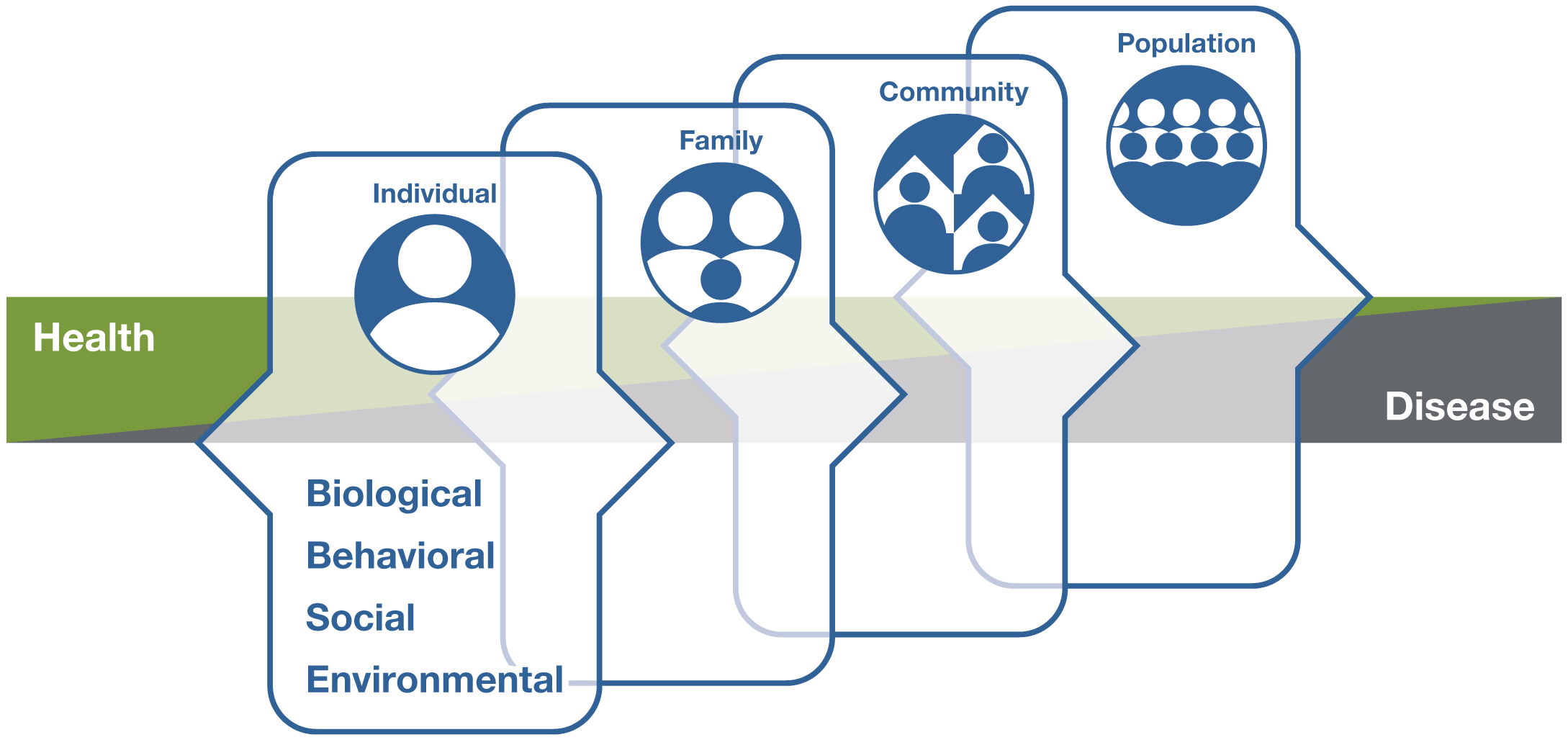
.header_greentext{color:green!important;font-size:24px!important;font-weight:500!important;}.header_bluetext{color:blue!important;font-size:18px!important;font-weight:500!important;}.header_redtext{color:red!important;font-size:28px!important;font-weight:500!important;}.header_darkred{color:#803d2f!important;font-size:28px!important;font-weight:500!important;}.header_purpletext{color:purple!important;font-size:31px!important;font-weight:500!important;}.header_yellowtext{color:yellow!important;font-size:20px!important;font-weight:500!important;}.header_blacktext{color:black!important;font-size:22px!important;font-weight:500!important;}.header_whitetext{color:white!important;font-size:22px!important;font-weight:500!important;}.header_darkred{color:#803d2f!important;}.Green_Header{color:green!important;font-size:24px!important;font-weight:500!important;}.Blue_Header{color:blue!important;font-size:18px!important;font-weight:500!important;}.Red_Header{color:red!important;font-size:28px!important;font-weight:500!important;}.Purple_Header{color:purple!important;font-size:31px!important;font-weight:500!important;}.Yellow_Header{color:yellow!important;font-size:20px!important;font-weight:500!important;}.Black_Header{color:black!important;font-size:22px!important;font-weight:500!important;}.White_Header{color:white!important;font-size:22px!important;font-weight:500!important;} Why is whole person health important?
Health and disease are not separate, disconnected states but instead occur on a path that can move in two different directions, either toward health or toward disease.
On this path, many factors, including one’s biological makeup; some unhealthy behaviors, such as poor diet, sedentary lifestyle, chronic stress, and poor sleep; as well as social aspects of life—the conditions in which people are born, grow, live, work, and age—can lead to chronic diseases of more than one organ system. On the other hand, self-care, lifestyle, and behavioral interventions may help with the return to health.
Chronic diseases, such as diabetes, cardiovascular disease, obesity, and degenerative joint disease, can also occur with chronic pain, depression, and opioid misuse—all conditions exacerbated by chronic stress. Some chronic diseases increase the immediate and long-term risks with COVID-19 infection. Understanding the condition in which a person has lived, addressing behaviors at an early stage, and managing stress can not only prevent multiple diseases but also help restore health and stop the progression to disease across a person’s lifespan.
.header_greentext{color:green!important;font-size:24px!important;font-weight:500!important;}.header_bluetext{color:blue!important;font-size:18px!important;font-weight:500!important;}.header_redtext{color:red!important;font-size:28px!important;font-weight:500!important;}.header_darkred{color:#803d2f!important;font-size:28px!important;font-weight:500!important;}.header_purpletext{color:purple!important;font-size:31px!important;font-weight:500!important;}.header_yellowtext{color:yellow!important;font-size:20px!important;font-weight:500!important;}.header_blacktext{color:black!important;font-size:22px!important;font-weight:500!important;}.header_whitetext{color:white!important;font-size:22px!important;font-weight:500!important;}.header_darkred{color:#803d2f!important;}.Green_Header{color:green!important;font-size:24px!important;font-weight:500!important;}.Blue_Header{color:blue!important;font-size:18px!important;font-weight:500!important;}.Red_Header{color:red!important;font-size:28px!important;font-weight:500!important;}.Purple_Header{color:purple!important;font-size:31px!important;font-weight:500!important;}.Yellow_Header{color:yellow!important;font-size:20px!important;font-weight:500!important;}.Black_Header{color:black!important;font-size:22px!important;font-weight:500!important;}.White_Header{color:white!important;font-size:22px!important;font-weight:500!important;} Is whole person health being used now in health care?
Some health care systems and programs are now focusing more on whole person health.
.header_greentext{color:green!important;font-size:24px!important;font-weight:500!important;}.header_bluetext{color:blue!important;font-size:18px!important;font-weight:500!important;}.header_redtext{color:red!important;font-size:28px!important;font-weight:500!important;}.header_darkred{color:#803d2f!important;font-size:28px!important;font-weight:500!important;}.header_purpletext{color:purple!important;font-size:31px!important;font-weight:500!important;}.header_yellowtext{color:yellow!important;font-size:20px!important;font-weight:500!important;}.header_blacktext{color:black!important;font-size:22px!important;font-weight:500!important;}.header_whitetext{color:white!important;font-size:22px!important;font-weight:500!important;}.header_darkred{color:#803d2f!important;}.Green_Header{color:green!important;font-size:24px!important;font-weight:500!important;}.Blue_Header{color:blue!important;font-size:18px!important;font-weight:500!important;}.Red_Header{color:red!important;font-size:28px!important;font-weight:500!important;}.Purple_Header{color:purple!important;font-size:31px!important;font-weight:500!important;}.Yellow_Header{color:yellow!important;font-size:20px!important;font-weight:500!important;}.Black_Header{color:black!important;font-size:22px!important;font-weight:500!important;}.White_Header{color:white!important;font-size:22px!important;font-weight:500!important;} U.S. Department of Veterans Affairs (VA) Whole Health Approach
The VA’s Whole Health System of Care and Whole Health approach aims to improve the health and well-being of veterans and to address lifestyle and environmental root causes of chronic disease. The approach shifts from a disease-centered focus to a more personalized approach that engages and empowers veterans early in and throughout their lives to prioritize healthy lifestyle changes in areas like nutrition, activity, sleep, relationships, and surroundings. Conventional testing and treatment are combined with complementary and integrative health approaches that may include acupuncture, biofeedback, massage therapy, yoga, and meditation.
.header_greentext{color:green!important;font-size:24px!important;font-weight:500!important;}.header_bluetext{color:blue!important;font-size:18px!important;font-weight:500!important;}.header_redtext{color:red!important;font-size:28px!important;font-weight:500!important;}.header_darkred{color:#803d2f!important;font-size:28px!important;font-weight:500!important;}.header_purpletext{color:purple!important;font-size:31px!important;font-weight:500!important;}.header_yellowtext{color:yellow!important;font-size:20px!important;font-weight:500!important;}.header_blacktext{color:black!important;font-size:22px!important;font-weight:500!important;}.header_whitetext{color:white!important;font-size:22px!important;font-weight:500!important;}.header_darkred{color:#803d2f!important;}.Green_Header{color:green!important;font-size:24px!important;font-weight:500!important;}.Blue_Header{color:blue!important;font-size:18px!important;font-weight:500!important;}.Red_Header{color:red!important;font-size:28px!important;font-weight:500!important;}.Purple_Header{color:purple!important;font-size:31px!important;font-weight:500!important;}.Yellow_Header{color:yellow!important;font-size:20px!important;font-weight:500!important;}.Black_Header{color:black!important;font-size:22px!important;font-weight:500!important;}.White_Header{color:white!important;font-size:22px!important;font-weight:500!important;} U.S. Department of Defense Total Force Fitness Program
The Total Force Fitness program arose within the U.S. Department of Defense Military Health System in response to the need for a more holistic approach—a focus on the whole person instead of separate parts or only symptoms—to the demands of multiple deployments and the strains on the U.S. Armed Forces and their family members. The focus extends the idea of total fitness to include the health, well-being, and resilience of the whole person, family, community, and U.S. military.
.header_greentext{color:green!important;font-size:24px!important;font-weight:500!important;}.header_bluetext{color:blue!important;font-size:18px!important;font-weight:500!important;}.header_redtext{color:red!important;font-size:28px!important;font-weight:500!important;}.header_darkred{color:#803d2f!important;font-size:28px!important;font-weight:500!important;}.header_purpletext{color:purple!important;font-size:31px!important;font-weight:500!important;}.header_yellowtext{color:yellow!important;font-size:20px!important;font-weight:500!important;}.header_blacktext{color:black!important;font-size:22px!important;font-weight:500!important;}.header_whitetext{color:white!important;font-size:22px!important;font-weight:500!important;}.header_darkred{color:#803d2f!important;}.Green_Header{color:green!important;font-size:24px!important;font-weight:500!important;}.Blue_Header{color:blue!important;font-size:18px!important;font-weight:500!important;}.Red_Header{color:red!important;font-size:28px!important;font-weight:500!important;}.Purple_Header{color:purple!important;font-size:31px!important;font-weight:500!important;}.Yellow_Header{color:yellow!important;font-size:20px!important;font-weight:500!important;}.Black_Header{color:black!important;font-size:22px!important;font-weight:500!important;}.White_Header{color:white!important;font-size:22px!important;font-weight:500!important;} Whole Health Institute
Established in 2020, the Whole Health Institute’s Whole Health model helps people identify what matters most to them and build a plan for their journey to whole health. The model provides tools to help people take good care of their body, mind, and spirit, and involves working with a health care team as well as tapping into the support of family, friends, and communities.
.header_greentext{color:green!important;font-size:24px!important;font-weight:500!important;}.header_bluetext{color:blue!important;font-size:18px!important;font-weight:500!important;}.header_redtext{color:red!important;font-size:28px!important;font-weight:500!important;}.header_darkred{color:#803d2f!important;font-size:28px!important;font-weight:500!important;}.header_purpletext{color:purple!important;font-size:31px!important;font-weight:500!important;}.header_yellowtext{color:yellow!important;font-size:20px!important;font-weight:500!important;}.header_blacktext{color:black!important;font-size:22px!important;font-weight:500!important;}.header_whitetext{color:white!important;font-size:22px!important;font-weight:500!important;}.header_darkred{color:#803d2f!important;}.Green_Header{color:green!important;font-size:24px!important;font-weight:500!important;}.Blue_Header{color:blue!important;font-size:18px!important;font-weight:500!important;}.Red_Header{color:red!important;font-size:28px!important;font-weight:500!important;}.Purple_Header{color:purple!important;font-size:31px!important;font-weight:500!important;}.Yellow_Header{color:yellow!important;font-size:20px!important;font-weight:500!important;}.Black_Header{color:black!important;font-size:22px!important;font-weight:500!important;}.White_Header{color:white!important;font-size:22px!important;font-weight:500!important;} North Carolina Department of Health and Human Services
The North Carolina Department of Health and Human Services has incorporated a whole person health approach into its health care system by focusing on integrating physical, behavioral, and social health. The state has taken steps to encourage collaborative behavioral health care and help resolve widespread inequities in social conditions, such as housing and nutritious food access.
.header_greentext{color:green!important;font-size:24px!important;font-weight:500!important;}.header_bluetext{color:blue!important;font-size:18px!important;font-weight:500!important;}.header_redtext{color:red!important;font-size:28px!important;font-weight:500!important;}.header_darkred{color:#803d2f!important;font-size:28px!important;font-weight:500!important;}.header_purpletext{color:purple!important;font-size:31px!important;font-weight:500!important;}.header_yellowtext{color:yellow!important;font-size:20px!important;font-weight:500!important;}.header_blacktext{color:black!important;font-size:22px!important;font-weight:500!important;}.header_whitetext{color:white!important;font-size:22px!important;font-weight:500!important;}.header_darkred{color:#803d2f!important;}.Green_Header{color:green!important;font-size:24px!important;font-weight:500!important;}.Blue_Header{color:blue!important;font-size:18px!important;font-weight:500!important;}.Red_Header{color:red!important;font-size:28px!important;font-weight:500!important;}.Purple_Header{color:purple!important;font-size:31px!important;font-weight:500!important;}.Yellow_Header{color:yellow!important;font-size:20px!important;font-weight:500!important;}.Black_Header{color:black!important;font-size:22px!important;font-weight:500!important;}.White_Header{color:white!important;font-size:22px!important;font-weight:500!important;} Ornish Program for Reversing Heart Disease
The Ornish Program for Reversing Heart Disease is an intensive cardiac rehabilitation program that has been shown to reverse the progression of coronary heart disease through lifestyle changes, without drugs or surgery. The program is covered by Medicare and some health insurance companies. The program’s lifestyle changes include exercise, smoking cessation, stress management, social support, and a whole-foods, plant-based diet low in total fat. The program is offered by a team of health care professionals who provide the support that individuals need to make and maintain lasting changes in lifestyle.
.header_greentext{color:green!important;font-size:24px!important;font-weight:500!important;}.header_bluetext{color:blue!important;font-size:18px!important;font-weight:500!important;}.header_redtext{color:red!important;font-size:28px!important;font-weight:500!important;}.header_darkred{color:#803d2f!important;font-size:28px!important;font-weight:500!important;}.header_purpletext{color:purple!important;font-size:31px!important;font-weight:500!important;}.header_yellowtext{color:yellow!important;font-size:20px!important;font-weight:500!important;}.header_blacktext{color:black!important;font-size:22px!important;font-weight:500!important;}.header_whitetext{color:white!important;font-size:22px!important;font-weight:500!important;}.header_darkred{color:#803d2f!important;}.Green_Header{color:green!important;font-size:24px!important;font-weight:500!important;}.Blue_Header{color:blue!important;font-size:18px!important;font-weight:500!important;}.Red_Header{color:red!important;font-size:28px!important;font-weight:500!important;}.Purple_Header{color:purple!important;font-size:31px!important;font-weight:500!important;}.Yellow_Header{color:yellow!important;font-size:20px!important;font-weight:500!important;}.Black_Header{color:black!important;font-size:22px!important;font-weight:500!important;}.White_Header{color:white!important;font-size:22px!important;font-weight:500!important;} What does research show about whole person health?
A growing body of research suggests the benefits of healthy behaviors, environments, and policies to maintain health and prevent, treat, and reverse chronic diseases. This research includes several large, long-term epidemiological studies—such as the Framingham Heart Study, Nurses’ Health Study, and Adventist Health Studies—that have evaluated the connections between lifestyle, diet, genetics, health, and disease.
There is a lack, however, of randomized controlled trials and other types of research on multicomponent interventions and whole person health. Challenges come with conducting this type of research and with finding appropriate ways to assess the evidence. But opportunities are emerging to explore new paths toward reliable and rigorous research on whole person health.
.header_greentext{color:green!important;font-size:24px!important;font-weight:500!important;}.header_bluetext{color:blue!important;font-size:18px!important;font-weight:500!important;}.header_redtext{color:red!important;font-size:28px!important;font-weight:500!important;}.header_darkred{color:#803d2f!important;font-size:28px!important;font-weight:500!important;}.header_purpletext{color:purple!important;font-size:31px!important;font-weight:500!important;}.header_yellowtext{color:yellow!important;font-size:20px!important;font-weight:500!important;}.header_blacktext{color:black!important;font-size:22px!important;font-weight:500!important;}.header_whitetext{color:white!important;font-size:22px!important;font-weight:500!important;}.header_darkred{color:#803d2f!important;}.Green_Header{color:green!important;font-size:24px!important;font-weight:500!important;}.Blue_Header{color:blue!important;font-size:18px!important;font-weight:500!important;}.Red_Header{color:red!important;font-size:28px!important;font-weight:500!important;}.Purple_Header{color:purple!important;font-size:31px!important;font-weight:500!important;}.Yellow_Header{color:yellow!important;font-size:20px!important;font-weight:500!important;}.Black_Header{color:black!important;font-size:22px!important;font-weight:500!important;}.White_Header{color:white!important;font-size:22px!important;font-weight:500!important;} Will the National Center for Complementary and Integrative Health (NCCIH) fund research on whole person health?
Yes, NCCIH plans to fund research on whole person health . (Details can be found in the NCCIH Strategic Plan FY 2021–2025: Mapping a Pathway to Research on Whole Person Health . )
By deepening the scientific understanding of the connections that exist across the different areas of human health, researchers can better understand how conditions interrelate, identify multicomponent interventions that address these problems, and determine the best ways to support individuals through the full continuum of their health experience, including the return to health.
.header_greentext{color:green!important;font-size:24px!important;font-weight:500!important;}.header_bluetext{color:blue!important;font-size:18px!important;font-weight:500!important;}.header_redtext{color:red!important;font-size:28px!important;font-weight:500!important;}.header_darkred{color:#803d2f!important;font-size:28px!important;font-weight:500!important;}.header_purpletext{color:purple!important;font-size:31px!important;font-weight:500!important;}.header_yellowtext{color:yellow!important;font-size:20px!important;font-weight:500!important;}.header_blacktext{color:black!important;font-size:22px!important;font-weight:500!important;}.header_whitetext{color:white!important;font-size:22px!important;font-weight:500!important;}.header_darkred{color:#803d2f!important;}.Green_Header{color:green!important;font-size:24px!important;font-weight:500!important;}.Blue_Header{color:blue!important;font-size:18px!important;font-weight:500!important;}.Red_Header{color:red!important;font-size:28px!important;font-weight:500!important;}.Purple_Header{color:purple!important;font-size:31px!important;font-weight:500!important;}.Yellow_Header{color:yellow!important;font-size:20px!important;font-weight:500!important;}.Black_Header{color:black!important;font-size:22px!important;font-weight:500!important;}.White_Header{color:white!important;font-size:22px!important;font-weight:500!important;} For More Information
Nccih clearinghouse.
The NCCIH Clearinghouse provides information on NCCIH and complementary and integrative health approaches, including publications and searches of Federal databases of scientific and medical literature. The Clearinghouse does not provide medical advice, treatment recommendations, or referrals to practitioners.
Toll-free in the U.S.: 1-888-644-6226
Telecommunications relay service (TRS): 7-1-1
Website: https://www.nccih.nih.gov
Email: [email protected] (link sends email)
Know the Science
NCCIH and the National Institutes of Health (NIH) provide tools to help you understand the basics and terminology of scientific research so you can make well-informed decisions about your health. Know the Science features a variety of materials, including interactive modules, quizzes, and videos, as well as links to informative content from Federal resources designed to help consumers make sense of health information.
Explaining How Research Works (NIH)
Know the Science: How To Make Sense of a Scientific Journal Article
Understanding Clinical Studies (NIH)
A service of the National Library of Medicine, PubMed® contains publication information and (in most cases) brief summaries of articles from scientific and medical journals. For guidance from NCCIH on using PubMed, see How To Find Information About Complementary Health Approaches on PubMed .
Website: https://pubmed.ncbi.nlm.nih.gov/
.header_greentext{color:green!important;font-size:24px!important;font-weight:500!important;}.header_bluetext{color:blue!important;font-size:18px!important;font-weight:500!important;}.header_redtext{color:red!important;font-size:28px!important;font-weight:500!important;}.header_darkred{color:#803d2f!important;font-size:28px!important;font-weight:500!important;}.header_purpletext{color:purple!important;font-size:31px!important;font-weight:500!important;}.header_yellowtext{color:yellow!important;font-size:20px!important;font-weight:500!important;}.header_blacktext{color:black!important;font-size:22px!important;font-weight:500!important;}.header_whitetext{color:white!important;font-size:22px!important;font-weight:500!important;}.header_darkred{color:#803d2f!important;}.Green_Header{color:green!important;font-size:24px!important;font-weight:500!important;}.Blue_Header{color:blue!important;font-size:18px!important;font-weight:500!important;}.Red_Header{color:red!important;font-size:28px!important;font-weight:500!important;}.Purple_Header{color:purple!important;font-size:31px!important;font-weight:500!important;}.Yellow_Header{color:yellow!important;font-size:20px!important;font-weight:500!important;}.Black_Header{color:black!important;font-size:22px!important;font-weight:500!important;}.White_Header{color:white!important;font-size:22px!important;font-weight:500!important;} Key References
- Aggarwal M, Ornish D, Josephson R, et al. Closing gaps in lifestyle adherence for secondary prevention of coronary heart disease. American Journal of Cardiology. 2021;145:1-11.
- Centers for Medicare & Medicaid Services. Decision Memo for Intensive Cardiac Rehabilitation (ICR) Program—Dr. Ornish’s Program for Reversing Heart Disease (CAG-00419N). Accessed at https://www.cms.gov/ on April 26, 2021.
- Deuster PA, O’Connor FG. Human performance optimization: culture change and paradigm shift. Journal of Strength and Conditioning Research. 2015;29(suppl 11):S52-S56.
- Gaudet T, Kligler B. Whole health in the whole system of the Veterans Administration: how will we know we have reached this future state? Journal of Alternative and Complementary Medicine. 2019;25(S1):S7-S11.
- Malecki HL, Gollie JM, Scholten J. Physical activity, exercise, whole health, and integrative health coaching. Physical Medicine and Rehabilitation Clinics of North America. 2020;31(4):649-663.
- National Center for Complementary and Integrative Health. NCCIH Strategic Plan FY 2021–2025: Mapping a Pathway to Research on Whole Person Health. National Center for Complementary and Integrative Health website. Accessed at https://www.nccih.nih.gov/about/nccih-strategic-plan-2021-2025 on May 14, 2021.
- North Carolina Department of Health and Human Services website. Healthy Opportunities and Medicaid Transformation. Accessed at https://www.ncdhhs.gov/about/department-initiatives/healthy-opportunities/healthy-opportunities-pilots/healthy on April 26, 2021.
- Military Health System website. Total Force Fitness. Accessed at https://health.mil/Military-Health-Topics/Total-Force-Fitness on April 26, 2021.
- Tilson EC, Muse A, Colville K, et al. Investing in whole person health: working toward an integration of physical, behavioral, and social health. North Carolina Medical Journal. 2020;81(3):177-180.
- U.S. Department of Veterans Affairs website. Whole Health. Accessed at https://www.va.gov/wholehealth/ on April 26, 2021.
- U.S. Department of Veterans Affairs website. Whole Health Library. Accessed at https://www.va.gov/wholehealthlibrary/ on April 26, 2021.
- Vodovotz Y, Barnard N, Hu FB, et al. Prioritized research for the prevention, treatment, and reversal of chronic disease: recommendations from the Lifestyle Medicine Research Summit. Frontiers in Medicine (Lausanne). 2020;7:585744.
- Whitehead AM, Kligler B. Innovations in care: complementary and integrative health in the Veterans Health Administration Whole Health System. Medical Care. 2020;58(9S)(suppl 2):S78-S79.
.header_greentext{color:green!important;font-size:24px!important;font-weight:500!important;}.header_bluetext{color:blue!important;font-size:18px!important;font-weight:500!important;}.header_redtext{color:red!important;font-size:28px!important;font-weight:500!important;}.header_darkred{color:#803d2f!important;font-size:28px!important;font-weight:500!important;}.header_purpletext{color:purple!important;font-size:31px!important;font-weight:500!important;}.header_yellowtext{color:yellow!important;font-size:20px!important;font-weight:500!important;}.header_blacktext{color:black!important;font-size:22px!important;font-weight:500!important;}.header_whitetext{color:white!important;font-size:22px!important;font-weight:500!important;}.header_darkred{color:#803d2f!important;}.Green_Header{color:green!important;font-size:24px!important;font-weight:500!important;}.Blue_Header{color:blue!important;font-size:18px!important;font-weight:500!important;}.Red_Header{color:red!important;font-size:28px!important;font-weight:500!important;}.Purple_Header{color:purple!important;font-size:31px!important;font-weight:500!important;}.Yellow_Header{color:yellow!important;font-size:20px!important;font-weight:500!important;}.Black_Header{color:black!important;font-size:22px!important;font-weight:500!important;}.White_Header{color:white!important;font-size:22px!important;font-weight:500!important;} Other References
- Alborzkouh P, Nabati M, Zainali M, et al. A review of the effectiveness of stress management skills training on academic vitality and psychological well-being of college students. Journal of Medicine and Life. 2015;8(4):39-44.
- Bisht K, Sharma K, Tremblay M-È. Chronic stress as a risk factor for Alzheimer's disease: roles of microglia-mediated synaptic remodeling, inflammation, and oxidative stress. Neurobiology of Stress. 2018;9:9-21.
- Buettner D, Skemp S. Blue Zones: lessons from the world’s longest lived. American Journal of Lifestyle Medicine. 2016;10(5):318-321.
- Chen T-L, Chang S-C, Hsieh H-F, et al. Effects of mindfulness-based stress reduction on sleep quality and mental health for insomnia patients: a meta-analysis. Journal of Psychosomatic Research. 2020;135:110144.
- Conversano C, Orrù G, Pozza A, et al. Is mindfulness-based stress reduction effective for people with hypertension? A systematic review and meta-analysis of 30 years of evidence. International Journal of Environmental Research and Public Health. 2021;18(6):2882.
- Katz DL, Karlsen MC, Chung M, et al. Hierarchies of evidence applied to lifestyle medicine (HEALM): introduction of a strength-of-evidence approach based on a methodological systematic review. BMC Medical Research Methodology. 2019;19(1):178.
- Kruk J, Aboul-Enein BH, Bernstein J, et al. Psychological stress and cellular aging in cancer: a meta-analysis. Oxidative Medicine and Cellular Longevity. 2019;2019:1270397.
- Levesque C. Therapeutic lifestyle changes for diabetes mellitus. Nursing Clinics of North America. 2017;52(4):679-692.
- Ni Y, Ma L, Li J. Effects of mindfulness-based stress reduction and mindfulness-based cognitive therapy in people with diabetes: a systematic review and meta-analysis. Journal of Nursing Scholarship. 2020;52(4):379-388.
- Ornish Lifestyle Medicine website. The Ornish Reversal Program: Intensive Cardiac Rehabilitation. Accessed at https://www.ornish.com/intensive-cardiac-rehab/ on April 26, 2021.
- Schneiderman N, Ironson G, Siegel SD. Stress and health: psychological, behavioral, and biological determinants. Annual Review of Clinical Psychology. 2005;1:607-628.
- Seal KH, Becker WC, Murphy JL, et al. Whole Health Options and Pain Education (wHOPE): a pragmatic trial comparing whole health team vs primary care group education to promote nonpharmacological strategies to improve pain, functioning, and quality of life in veterans—rationale, methods, and implementation. Pain Medicine. 2020;21(suppl 2):S91-S99.
- Tamashiro KL, Sakai RR, Shively CA, et al. Chronic stress, metabolism, and metabolic syndrome. Stress. 2011;14(5):468-474.
- Whayne TF Jr, Saha SP. Genetic risk, adherence to a healthy lifestyle, and ischemic heart disease. Current Cardiology Reports. 2019;21(1):1.
- Whole Health Institute website. Accessed at https://www.wholehealth.org/ on May 19, 2021.
Acknowledgments
NCCIH thanks Mary Beth Kester, M.S., and Helene M. Langevin, M.D., NCCIH, for their review of this publication.
This publication is not copyrighted and is in the public domain. Duplication is encouraged.
NCCIH has provided this material for your information. It is not intended to substitute for the medical expertise and advice of your health care provider(s). We encourage you to discuss any decisions about treatment or care with your health care provider. The mention of any product, service, or therapy is not an endorsement by NCCIH.
Related Topics
NCCIH Strategic Plan FY 2021–2025 Mapping a Pathway to Research on Whole Person Health
Methodological Approaches for Whole Person Research Workshop
Transforming Veterans’ Health: Implementing a Whole Health System of Care
Complementary, Alternative, or Integrative Health: What’s In a Name?
An official website of the United States government
The .gov means it’s official. Federal government websites often end in .gov or .mil. Before sharing sensitive information, make sure you’re on a federal government site.
The site is secure. The https:// ensures that you are connecting to the official website and that any information you provide is encrypted and transmitted securely.
- Publications
- Account settings
Preview improvements coming to the PMC website in October 2024. Learn More or Try it out now .
- Advanced Search
- Journal List
- Can J Public Health
- v.110(3); 2019 Jun
Language: English | French
Why public health matters today and tomorrow: the role of applied public health research
Lindsay mclaren.
1 University of Calgary, Calgary, Canada
Paula Braitstein
2 University of Toronto, Toronto, Canada
David Buckeridge
3 McGill University, Montreal, Canada
Damien Contandriopoulos
4 University of Victoria, Victoria, Canada
Maria I. Creatore
5 CIHR Institute of Population & Public Health and University of Toronto, Toronto, Canada
Guy Faulkner
6 University of British Columbia, Vancouver, Canada
David Hammond
7 University of Waterloo, Waterloo, Canada
Steven J. Hoffman
8 CIHR Institute of Population & Public Health and York University, Toronto, Canada
Yan Kestens
9 Université de Montréal, Montreal, Canada
Scott Leatherdale
Jonathan mcgavock.
10 University of Manitoba and the Children’s Hospital Research Institute of Manitoba, Winnipeg, Canada
Wendy V. Norman
11 University of British Columbia, Vancouver, Canada
Candace Nykiforuk
12 University of Alberta, Edmonton, Canada
Valéry Ridde
13 IRD (French Institute For Research on Sustainable Development), CEPED (IRD-Université Paris Descartes), ERL INSERM SAGESUD, Université Paris Sorbonne Cités, Paris, France
14 University of Montreal Public Health Research Institute (IRSPUM), Montreal, Canada
Janet Smylie
Public health is critical to a healthy, fair, and sustainable society. Realizing this vision requires imagining a public health community that can maintain its foundational core while adapting and responding to contemporary imperatives such as entrenched inequities and ecological degradation. In this commentary, we reflect on what tomorrow’s public health might look like, from the point of view of our collective experiences as researchers in Canada who are part of an Applied Public Health Chairs program designed to support “innovative population health research that improves health equity for citizens in Canada and around the world.” We view applied public health research as sitting at the intersection of core principles for population and public health: namely sustainability, equity, and effectiveness. We further identify three attributes of a robust applied public health research community that we argue are necessary to permit contribution to those principles: researcher autonomy, sustained intersectoral research capacity, and a critical perspective on the research-practice-policy interface. Our intention is to catalyze further discussion and debate about why and how public health matters today and tomorrow, and the role of applied public health research therein.
Résumé
La santé publique est essentielle à une société saine, juste et durable. Pour donner forme à cette vision, il faut imaginer une communauté de la santé publique capable de préserver ses valeurs fondamentales tout en s’adaptant et en réagissant aux impératifs du moment, comme les inégalités persistantes et la dégradation de l’environnement. Dans notre commentaire, nous esquissons un portrait possible de la santé publique de demain en partant de notre expérience collective de chercheurs d’un programme canadien de chaires en santé publique appliquée qui visent à appuyer « la recherche innovatrice sur la santé de la population en vue d’améliorer l’équité en santé au Canada et ailleurs ». Nous considérons la recherche appliquée en santé publique comme se trouvant à la croisée des principes fondamentaux de la santé publique et des populations, à savoir : la durabilité, l’équité et l’efficacité. Nous définissons aussi les trois attributs d’une solide communauté de recherche appliquée en santé publique nécessaires selon nous au respect de ces principes : l’autonomie des chercheurs, une capacité de recherche intersectorielle soutenue et une perspective critique de l’interface entre la recherche, la pratique et les politiques. Nous voulons susciter des discussions et des débats approfondis sur l’importance de la santé publique pour aujourd’hui et pour demain et sur le rôle de la recherche appliquée en santé publique.
Introduction
Public health is critical to a healthy, fair, and sustainable society. Public health’s role in this vision stems from its foundational values of social justice and collectivity (Rutty and Sullivan 2010 ) and—we argue—from its position at the interface of research, practice, and policy.
Realizing this vision requires imagining a public health community that can maintain that foundational core, embrace opportunities of our changing world, and predict and adapt to emerging challenges in a timely manner. Unprecedented ecosystem disruption creates far-reaching health implications for which the public health community is unprepared (CPHA 2015 ; Whitmee et al. 2015 ). Human displacement is at its highest levels on record; those forced from home include “stateless people,” who are denied access to basic rights such as education, health care, employment, and freedom of movement ( http://www.unhcr.org/figures-at-a-glance.html ). Significant growth in urban populations creates an urgent need to improve urban environments, including policies to reduce air pollution and prevent sprawl (CPHA 2015 ; Frumkin et al. 2004 ), to reduce the substantial burden of morbidity and mortality attributable to behaviours such as physical inactivity, which negatively impact quality and quantity of life (Manuel et al. 2016 ). Significant and entrenched forms of economic, social, political, and historical marginalization and exclusion (TRC 2015 ), coupled with inequitable and unsustainable patterns of resource consumption and technological development (CPHA 2015 ; Whitmee et al. 2015 ), cause and perpetuate health inequities. These inequities underlie the now longstanding recognition that the unequal distributions of health-damaging experiences are the main determinants of health (CSDH 2008 ; Ridde 2004 ).
These imperatives demand a broadly characterized public health community. A now classic definition of public health is the science and art of preventing disease, prolonging life, and promoting health through the organized efforts of society (Last 2001 ). Public health, conceptualized in this manner, engages multiple sectors, embraces inclusion and empowerment (Ridde 2007 ), and demands navigating diverse political and economic agendas. Across Canada, a large and growing proportion of provincial spending is devoted to health care, while the proportion devoted to social spending (i.e., the social determinants of health) is small, flat-lining, and in some places declining (Dutton et al. 2018 ). Recent discourse has highlighted a weakening of formal public health infrastructure (Guyon et al. 2017 ) and points of fracture within the field (Lucyk and McLaren 2017 ). Efforts to strengthen public health, in its broadest sense, and to work towards unity of purpose (Talbot 2018 ) are needed now more than ever. What might such efforts look like?
We reflect on this question from our perspectives as researchers who are part of an Applied Public Health Chairs (APHC) program designed to support “innovative population health research that improves health equity for citizens in Canada and around the world.” 1 The applied dimension 2 is facilitated through the program’s focus on “interdisciplinary collaborations and mentorship of researchers and decision makers in health and other sectors” ( http://www.cihr-irsc.gc.ca/e/48898.html ). The APHC program (Box 1) is part of a broader set of efforts to address gaps in public health capacity, including research. Cross-cutting themes for the 2014 cohort (Box 2) include the following: healthy public policy, supportive environments (e.g., cities), diverse methodological approaches, global health, and health equity; many of which 3 align with a Public Health Services and Systems Research perspective in that they “identif[y] the implementation strategies that work, building evidence to support decision-making across the public health sphere” ( http://www.publichealthsystems.org/ ). Applied public health research is broad and could span CIHR Pillars 4 (social, cultural, environmental, and population health research) and 3 (health services research); the 2014 APHC cohort is predominantly aligned with Pillar 4.
The APHC program represents a significant Canadian investment in public health, and thus provides an important vantage point from which to reflect on why public health matters today, and tomorrow.
Box 1 The Applied Public Health Chairs program
| Program objectives | |
| • Support high-quality programs of population health intervention research | |
| • Stimulate the application of innovative theories, methods and approaches in research and knowledge translation that promote reciprocal learning within and between countries | |
| • Catalyze interdisciplinary and intersectoral collaborations between researchers and knowledge users that contribute to evidence-informed decision-making and use of knowledge by public health and other sectors | |
| • Mentor the current and next generation of population and public health researchers, practitioners, and policy-makers from a range of disciplines and sectors | |
| Funding partners | |
| • CIHR Institute of Population & Public Health ( ) | |
| • Public Health Agency of Canada ( ) | |
| • CIHR Institute of Health Services & Policy Research ( ) | |
| • CIHR Institute of Indigenous Peoples’ Health ( ) | |
| • CIHR Institute of Musculoskeletal Health & Arthritis ( ) | |
| • CIHR Institute of Neurosciences, Mental Health, & Addictions ( ) | |
| • CIHR HIV/AIDS Research Initiative ( ) | |
| • Alberta Innovates–Health Solutions ( ) | |
| • Fonds de recherche du Québec–Santé ( ) |
Box 2 2014 cohort of Applied Public Health Chairs
| Thematic foci of research programs | |
| • Population health and HIV prevention (Paula Braitstein, University of Toronto) | |
| • E-Health and public health interventions (David Buckeridge, McGill University) | |
| • Canada’s health care system and public health interventions (Damien Contandriopoulos, University of Victoria) | |
| • Physical activity and public health (Guy Faulkner, University of British Columbia) | |
| • Health adaptation and climate change (James Ford, formerly McGill University) | |
| • Evaluating smoking and healthy weight policies (David Hammond, University of Waterloo) | |
| • Urban interventions and public health (Yan Kestens, Université de Montréal) | |
| • Chronic disease prevention and youth (Scott Leatherdale, University of Waterloo) | |
| • Aboriginal health equity and obesity (Jonathan McGavock, University of Manitoba) | |
| • Oral health and policy (Lindsay McLaren, University of Calgary) | |
| • Sexual and reproductive health (Wendy V. Norman, University of British Columbia) | |
| • Public policy and community environments (Candace Nykiforuk, University of Alberta) | |
| • Global health and community health interventions (Valéry Ridde, formerly Université de Montréal) | |
| • Indigenous health knowledge and information as tools to advance equity (Janet Smylie, University of Toronto) |
More details available at: http://www.cihr-irsc.gc.ca/e/48898.html
Our proposal
We propose that applied public health research is a critical component of a robust population and public health community. As illustrated in Fig. 1 , we view applied public health research as sitting at the nexus of three core principles: (1) sustainability, (2) equity, and (3) effectiveness, which align with a vision of public health as critical to a healthy, fair, and sustainable society. By sustainability , we mean an approach or way of thinking, about public health in particular (e.g., Schell et al. 2013 ) and population well-being more broadly ( https://sustainabledevelopment.un.org/sdgs ) that emphasizes “meet[ing] the needs of the present generation without compromising the ability of future generations to meet their own needs” (Brundtland et al. 1987 ). Sustainability has social, economic, environmental, and political dimensions. We define equity as a worldview concerned with the embedded or systemic—and often invisible—drivers of unfair distributions of health-damaging experiences. In Canada and elsewhere, inequity is entrenched in legacies of colonial, structural racism designed to sustain inequitable patterns of power and wealth. Equity transcends diverse axes and perspectives, and an equity lens is action-oriented (Ridde 2007 ). Finally, effectiveness refers to impact or benefits for population well-being, as demonstrated by rigorous research. Explicit core values (e.g., equity), while important, are insufficient without translation to demonstrable outcomes (Potvin and Jones 2011 ). These core principles—sustainability, equity, and effectiveness—overlap and are mutually reinforcing; for example, the inequitable concentration of power, wealth, and exploitation of resources precludes sustainability.

Visual depiction of the role and attributes of applied public health research, vis-à-vis core population and public health principles of equity, sustainability, and effectiveness
Although these principles are applicable to the public health community broadly (i.e., including but not limited to researchers), applied public health researchers are uniquely situated to embrace sustainability, equity, and effectiveness when asking questions and generating policy- and practice-relevant knowledge, as illustrated below. Drawing on our collective experiences, we describe three necessary attributes of applied public health research that support our model in Fig. 1 : researcher autonomy, sustained intersectoral research capacity; and a critical perspective on the research-practice-policy interface. We assert that applied public health research is best positioned to contribute meaningfully to the principles of sustainability, effectiveness, and equity if the attributes described below are in place.
Researcher autonomy
Researcher autonomy is a precondition for innovation and independent thinking, and for building and sustaining the conditions for collective efforts. Our working definition of researcher autonomy is the capacity to devote time and energy to activities that, at the researcher’s discretion, facilitate research that embraces principles of sustainability, effectiveness, and equity. Autonomy, beyond the scope of general academic independence, provides the freedom to build and nurture partnerships, and to navigate among universities, health care systems, governments, communities, and across sectors. Effective and respectful partnerships are critical to rigorous intersectoral work and can provide an important platform to discuss systemic forms of inequity (e.g., Olivier et al. 2016 ; Morton Ninomiya et al. 2017 ). Recognizing a potential tension around the role of the researcher in an applied public health context, we deliberately selected the word “autonomy,” which we view as conducive to meaningful collaboration (although that may be experienced differently by different researchers), rather than “independence” which can be seen as contrary to such collaboration. Yet despite their importance, the time and resources to form and sustain those relationships are often not accommodated within funding and academic structures.
Autonomy, when coupled with resources and recognition, permits applied public health researchers to balance foundations of public health with current policy relevance. Although many of us have research programs with particular thematic foci (e.g., physical activity, dental health, HIV), autonomy provides space and credibility to connect those focal issues to enduring and evolving problems in public health (e.g., determinants of population well-being and equity), and to inform the contemporary policy context. Examples include research on health implications of neighbourhood gentrification in urban settings (Steinmetz-Wood et al. 2017 ); using community water fluoridation as a window into public and political understanding and acceptance of public health interventions that are universal in nature (McLaren and Petit 2018 ); and using innovative sampling methods to identify how census methods can perpetuate exclusion (Rotondi et al. 2017 ). That latter work, which estimated that the national census undercounts urban Indigenous populations in Toronto by a factor of approximately 2–4, provides impetus to work towards an inclusive system that respects individual and collective data sovereignty, and that is accountable to the communities from whom data are collected.
These implications of autonomy are consistent with calls for greater reflexivity in public health research (Tremblay and Parent 2014 ).
Insight : To strengthen applied public health research in Canada, researcher autonomy – whereby researchers have the credibility and protected time to set their own agendas in partnerships with the communities they serve – must be privileged.
Sustained intersectoral research capacity
Applied public health research requires funding for resources and infrastructure that are essential to sustain an intersectoral research program, but for which operating funds are otherwise not readily available. Examples include ongoing cohort studies (e.g., Leatherdale et al. 2014 ), research software platforms (e.g., Shaban-Nejad et al. 2017 ), meaningful public sector engagement in developing public health priorities, and knowledge translation activities.
Partnerships, also considered under researcher autonomy above, are one form of intersectoral research capacity. In applied public health research, having strong partnerships in place permits timely response to research opportunities that arise quickly in real-world settings. Examples in our cohort include instances where researchers were able to mobilize for rapid response funding competitions in areas of environment and health, communicable disease in the global South, and Indigenous training networks, because collaborative teams and potential for knowledge co-creation and transfer were already in place.
Insight : A robust applied public health research community requires sustained funding to support foundations of a credible and internationally-competitive research program (e.g., cohort studies, research software platforms, meaningful public sector engagement) that are difficult to resource via usual operating grant channels.
A critical perspective on the research-practice-policy interface
One barrier to evidence-based policy in applied public health is an assumption that evidence is the most important factor in making policy decisions, versus a more holistic view of the policymaking process where evidence is one of many factors, as discussed in recent work (Fafard and Hoffman 2018 ; O’Neill et al. 2019 ; Ridde and Yaméogo 2018 ).
Applied public health research is ideally positioned to embrace a critical perspective on the research-practice-policy interface. Several recent trends are promising in that regard. These include the following: substantive efforts to bridge public health and social science scholarship ( http://www.cihr-irsc.gc.ca/e/50604.html ), growing success by Pillar 4 researchers (including applied public health) in CIHR’s open funding competitions ( http://www.cihr-irsc.gc.ca/e/50488.html ), and the CIHR Health System Impact Fellowship initiative ( http://www.cihr-irsc.gc.ca/e/50612.html ), which could facilitate the placement of doctoral and post-doctoral academic researchers within the public health system and related (e.g., public, NGO) organizations.
Insight : Applied public health researchers are ideally positioned to embrace and model a sophisticated and interdisciplinary perspective on the research-practice-policy interface. To do so, opportunities for researchers (including trainees) to gain skills and experience to navigate the policy context are needed.
Against the backdrop of discourse about a weakening of public health infrastructure and fracture within the field (Guyon et al. 2017 ; Lucyk and McLaren 2017 ), we believe that there is value in working towards a unity of purpose (Talbot 2018 ). This commentary was prompted by a shared belief that through our experience with the Applied Public Health Chair Program, we have seen a glimpse of what is needed to achieve a population and public health community that is positioned to tackle societal imperatives, which includes an important role for applied public health research, spanning CIHR Pillars 3 and 4. Anchored in principles of sustainability, equity, and effectiveness, we assert a strong need for applied research infrastructure that privileges and supports: researcher autonomy, sustained funding to support foundations of a credible and internationally competitive research program, and opportunities for researchers (including trainees) to gain skills and experience to navigate the policy context. We welcome and invite further discussion and debate.
1 Under CIHR-IPPH’s mandate, population health research refers to “research into the complex biological, social, cultural, and environmental interactions that determine the health of individuals, communities, and global populations.”
2 Applied may be defined as follows: “put to practical use,” as opposed to being theoretical ( https://www.merriam-webster.com/dictionary/applied ).
3 For example: https://uwaterloo.ca/compass-system/ (Leatherdale); http://cart-grac.ubc.ca/ (Norman); http://www.healthsystemsglobal.org/ (Ridde).
The original version of this article was revised due to a retrospective Open Access order.
Publisher’s note
Springer Nature remains neutral with regard to jurisdictional claims in published maps and institutional affiliations.
Change history
The article ���Why public health matters today and tomorrow: the role of applied public health research,��� written by Lindsay McLaren et al., was originally published Online First without Open Access.
- Brundtland G, Khalid M, Agnelli S, Al-Athel S, Chidzero B, Fadika L, Hauff V, Lang I, Shijun M, Morino de Botero M, Singh M, Okita S, and et al. (1987). Report of the World Commission on Environment and Development: Our Common Future (‘Brundtland report’). United Nations World Commission on Environment and Development.
- Canadian Public Health Association Discussion Paper . Global change and public health: Addressing the ecological determinants of health. Ottawa: Canadian Public Health Association; 2015. [ Google Scholar ]
- Commission on Social Determinants of Health (CSDH) (2008) . Closing the gap in a generation: health equity through action on the social determinants of health. Final Report of the Commission on Social Determinants of Health. Geneva: World Health Organization.
- Dutton DJ, Forest P-G, Kneebone RD, Zwicker JD. Effect of provincial spending on social services and health care on health outcomes in Canada: an observational longitudinal study. CMAJ. 2018; 190 (3):E66–E71. doi: 10.1503/cmaj.170132. [ PMC free article ] [ PubMed ] [ CrossRef ] [ Google Scholar ]
- Fafard, P., & Hoffman, S. J. (2018). Rethinking knowledge translation for public health policy. Evidence & Policy . 10.1332/174426418X15212871808802.
- Frumkin H, Frank L, Jackson R. Urban sprawl and public health: designing, planning and building for healthy communities. Washington: Island Press; 2004. [ Google Scholar ]
- Guyon, A., Hancock, T., Kirk, M., MacDonald, J., Neudorf, C., Sutcliffe, P., Talbot, J., Watson-Creed, G. (2017). The weakening of public health: a threat to population health and health care system sustainability. Can J Public Health, 108 (1), 1–6. [ PMC free article ] [ PubMed ]
- Last JM, editor. A dictionary of epidemiology (4th ed) Oxford: Oxford University Press; 2001. [ Google Scholar ]
- Leatherdale ST, Brown KS, Carson V, Childs RA, Dubin JA, Elliott SJ, Faulkner G, Hammond D, Manske S, Sabiston CM, Laxer RE, Bredin C, Thompson-Haile A. The COMPASS study: a longitudinal hierarchical research platform for evaluating natural experiments related to changes in school-level programs, policies and build environment resources. BMC Public Health. 2014; 14 :331. doi: 10.1186/1471-2458-14-331. [ PMC free article ] [ PubMed ] [ CrossRef ] [ Google Scholar ]
- Lucyk K, McLaren L. Is the future of “population/public health” in Canada united or divided? Reflections from within the field. Health Promotion and Chronic Disease Prevention in Canada: Research, Policy and Practice. 2017; 37 (7):223–227. doi: 10.24095/hpcdp.37.7.03. [ PMC free article ] [ PubMed ] [ CrossRef ] [ Google Scholar ]
- Manuel DG, Perez R, Sanmartin C, Taljaard M, Hennessy D, Wilson K, Tanuseputro P, Manson H, Benett C, Tuna M, Fisher S, Rosella LC. Measuring burden of unhealthy behaviours using a multivariable predictive approach: life expectancy lost in Canada attributable to smoking, alcohol, physical inactivity, and diet. PLoS Med. 2016; 13 (8):e1002082. doi: 10.1371/journal.pmed.1002082. [ PMC free article ] [ PubMed ] [ CrossRef ] [ Google Scholar ]
- McLaren L, Petit R. Universal and targeted policy to achieve health equity: a critical analysis of the example of community water fluoridation cessation in Calgary, Canada in 2011. Crit Public Health. 2018; 28 (2):153–164. doi: 10.1080/09581596.2017.1361015. [ CrossRef ] [ Google Scholar ]
- Morton Ninomiya ME, Atkinson D, Brascoupé S, Firestone M, Robinson N, Reading J, Ziegler CP, Maddox R, Smylie JK. Effective knowledge translation approaches and practices in indigenous health research: a systematic review protocol. Systematic Reviews. 2017; 6 (1):34. doi: 10.1186/s13643-017-0430-x. [ PMC free article ] [ PubMed ] [ CrossRef ] [ Google Scholar ]
- O’Neill B, Kapoor T, McLaren L. Politics, science and termination: a case study of water fluoridation in Calgary in 2011. Rev Policy Res. 2019; 36 (1):99–120. [ Google Scholar ]
- Olivier C, Hunt MR, Ridde V. NGO-researcher partnerships in global health research: benefits, challenges, and approaches that promote success. Dev Pract. 2016; 26 (4):444–455. doi: 10.1080/09614524.2016.1164122. [ CrossRef ] [ Google Scholar ]
- Potvin L, Jones CM. Twenty-five years after the Ottawa charter: the critical role of health promotion for public health. Canadian Journal of Public Health. 2011; 102 (4):244–248. doi: 10.1007/BF03404041. [ PMC free article ] [ PubMed ] [ CrossRef ] [ Google Scholar ]
- Ridde V. Une analyse comparative entre le Canada, le Québec et la France: l’importance des rapports sociaux et politiques eu égard aux determinants et aux inégalités de la santé L’antilibéralisme. 2004; 45 (2):343–364. [ Google Scholar ]
- Ridde V. Réduire les inégalités sociales de santé: santé publique, santé communautaire ou promotion de la santé? Promot Educ. 2007; XIV (2):111–114. doi: 10.1177/10253823070140020601. [ CrossRef ] [ Google Scholar ]
- Ridde V, Yaméogo P (2018). How Burkina Faso used evidence in deciding to launch its policy of free healthcare for children under five and women in 2016. Palgrave Communications ;119(4).
- Rotondi MA, O’Campo P, O’Brien K, Firestone M, Wolfe SH, Bourgeois C, Smylie JK. Our Health Counts Toronto: using respondent-driven sampling to unmask census undercounts of an urban indigenous population in Toronto, Canada. BMJ Open. 2017; 7 :e018936. doi: 10.1136/bmjopen-2017-018936. [ PMC free article ] [ PubMed ] [ CrossRef ] [ Google Scholar ]
- Rutty C, Sullivan SC. This is public health: A Canadian history. Ottawa: Canadian Public Health Association; 2010. [ Google Scholar ]
- Schell SF, Luke DA, Schooley MW, Elliott MB, Herbers SH, Mueller NB, Bunger AC. Public health program capacity for sustainability: A new framework. Implement Sci. 2013; 8 :15. doi: 10.1186/1748-5908-8-15. [ PMC free article ] [ PubMed ] [ CrossRef ] [ Google Scholar ]
- Shaban-Nejad A, Lavigne M, Okhmatovskaia A, Buckeridge DL. PopHR: a knowledge-based platform to support integration, analysis, and visualization of population health data. Ann N Y Acad Sci. 2017; 1387 (1):44–53. doi: 10.1111/nyas.13271. [ PubMed ] [ CrossRef ] [ Google Scholar ]
- Steinmetz-Wood M, Wasfi R, Parker G, Bornstein L, Caron J, Kestens Y. Is gentrification all bad? Positive association between gentrification and individual’s perceived neighbourhood collective efficacy in Montreal, Canada. International Journal of Health Geographics. 2017; 16 (1):24. doi: 10.1186/s12942-017-0096-6. [ PMC free article ] [ PubMed ] [ CrossRef ] [ Google Scholar ]
- Talbot J. (2018). Keynote presentation at Campus Alberta 2018 annual conference, In defense of public health: identifying opportunities to strengthen our field. Calgary, May 9.
- Tremblay MC, Parent AA. Reflexivity in PHIR: let’s have a reflexive talk! Canadian Journal of Public Health. 2014; 105 (3):e221–e223. doi: 10.17269/cjph.105.4438. [ PMC free article ] [ PubMed ] [ CrossRef ] [ Google Scholar ]
- Truth and Reconciliation Canada (2015). Honouring the truth, reconciling for the future: Summary of the final report of the Truth and Reconciliation Commission of Canada . Winnipeg: Truth and Reconciliation Commission of Canada.
- Whitmee S, Haines A, Beyrer C, Boltz F, Capon AG, Berreira de Souza Dias B, Frumkin H, Gong P, Head P, Horton R, Mace GM, Marten R, Myers SS, Nishtar S, Osofsky SA, Pattanayak SK, Pongsiri MJ, Romanelli C, Soucat A, Vega J, Yach D. Safeguarding human health in the Anthropocene epoch: report of The Rockefeller Foundation-Lancet ommission on planetary health. Lancet. 2015; 386 (10007):1973–2028. doi: 10.1016/S0140-6736(15)60901-1. [ PubMed ] [ CrossRef ] [ Google Scholar ]

Research Topics & Ideas: Healthcare

F inding and choosing a strong research topic is the critical first step when it comes to crafting a high-quality dissertation, thesis or research project. If you’ve landed on this post, chances are you’re looking for a healthcare-related research topic , but aren’t sure where to start. Here, we’ll explore a variety of healthcare-related research ideas and topic thought-starters across a range of healthcare fields, including allopathic and alternative medicine, dentistry, physical therapy, optometry, pharmacology and public health.
NB – This is just the start…
The topic ideation and evaluation process has multiple steps . In this post, we’ll kickstart the process by sharing some research topic ideas within the healthcare domain. This is the starting point, but to develop a well-defined research topic, you’ll need to identify a clear and convincing research gap , along with a well-justified plan of action to fill that gap.
If you’re new to the oftentimes perplexing world of research, or if this is your first time undertaking a formal academic research project, be sure to check out our free dissertation mini-course. In it, we cover the process of writing a dissertation or thesis from start to end. Be sure to also sign up for our free webinar that explores how to find a high-quality research topic.
Overview: Healthcare Research Topics
- Allopathic medicine
- Alternative /complementary medicine
- Veterinary medicine
- Physical therapy/ rehab
- Optometry and ophthalmology
- Pharmacy and pharmacology
- Public health
- Examples of healthcare-related dissertations
Allopathic (Conventional) Medicine
- The effectiveness of telemedicine in remote elderly patient care
- The impact of stress on the immune system of cancer patients
- The effects of a plant-based diet on chronic diseases such as diabetes
- The use of AI in early cancer diagnosis and treatment
- The role of the gut microbiome in mental health conditions such as depression and anxiety
- The efficacy of mindfulness meditation in reducing chronic pain: A systematic review
- The benefits and drawbacks of electronic health records in a developing country
- The effects of environmental pollution on breast milk quality
- The use of personalized medicine in treating genetic disorders
- The impact of social determinants of health on chronic diseases in Asia
- The role of high-intensity interval training in improving cardiovascular health
- The efficacy of using probiotics for gut health in pregnant women
- The impact of poor sleep on the treatment of chronic illnesses
- The role of inflammation in the development of chronic diseases such as lupus
- The effectiveness of physiotherapy in pain control post-surgery

Topics & Ideas: Alternative Medicine
- The benefits of herbal medicine in treating young asthma patients
- The use of acupuncture in treating infertility in women over 40 years of age
- The effectiveness of homoeopathy in treating mental health disorders: A systematic review
- The role of aromatherapy in reducing stress and anxiety post-surgery
- The impact of mindfulness meditation on reducing high blood pressure
- The use of chiropractic therapy in treating back pain of pregnant women
- The efficacy of traditional Chinese medicine such as Shun-Qi-Tong-Xie (SQTX) in treating digestive disorders in China
- The impact of yoga on physical and mental health in adolescents
- The benefits of hydrotherapy in treating musculoskeletal disorders such as tendinitis
- The role of Reiki in promoting healing and relaxation post birth
- The effectiveness of naturopathy in treating skin conditions such as eczema
- The use of deep tissue massage therapy in reducing chronic pain in amputees
- The impact of tai chi on the treatment of anxiety and depression
- The benefits of reflexology in treating stress, anxiety and chronic fatigue
- The role of acupuncture in the prophylactic management of headaches and migraines

Topics & Ideas: Dentistry
- The impact of sugar consumption on the oral health of infants
- The use of digital dentistry in improving patient care: A systematic review
- The efficacy of orthodontic treatments in correcting bite problems in adults
- The role of dental hygiene in preventing gum disease in patients with dental bridges
- The impact of smoking on oral health and tobacco cessation support from UK dentists
- The benefits of dental implants in restoring missing teeth in adolescents
- The use of lasers in dental procedures such as root canals
- The efficacy of root canal treatment using high-frequency electric pulses in saving infected teeth
- The role of fluoride in promoting remineralization and slowing down demineralization
- The impact of stress-induced reflux on oral health
- The benefits of dental crowns in restoring damaged teeth in elderly patients
- The use of sedation dentistry in managing dental anxiety in children
- The efficacy of teeth whitening treatments in improving dental aesthetics in patients with braces
- The role of orthodontic appliances in improving well-being
- The impact of periodontal disease on overall health and chronic illnesses

Topics & Ideas: Veterinary Medicine
- The impact of nutrition on broiler chicken production
- The role of vaccines in disease prevention in horses
- The importance of parasite control in animal health in piggeries
- The impact of animal behaviour on welfare in the dairy industry
- The effects of environmental pollution on the health of cattle
- The role of veterinary technology such as MRI in animal care
- The importance of pain management in post-surgery health outcomes
- The impact of genetics on animal health and disease in layer chickens
- The effectiveness of alternative therapies in veterinary medicine: A systematic review
- The role of veterinary medicine in public health: A case study of the COVID-19 pandemic
- The impact of climate change on animal health and infectious diseases in animals
- The importance of animal welfare in veterinary medicine and sustainable agriculture
- The effects of the human-animal bond on canine health
- The role of veterinary medicine in conservation efforts: A case study of Rhinoceros poaching in Africa
- The impact of veterinary research of new vaccines on animal health
Topics & Ideas: Physical Therapy/Rehab
- The efficacy of aquatic therapy in improving joint mobility and strength in polio patients
- The impact of telerehabilitation on patient outcomes in Germany
- The effect of kinesiotaping on reducing knee pain and improving function in individuals with chronic pain
- A comparison of manual therapy and yoga exercise therapy in the management of low back pain
- The use of wearable technology in physical rehabilitation and the impact on patient adherence to a rehabilitation plan
- The impact of mindfulness-based interventions in physical therapy in adolescents
- The effects of resistance training on individuals with Parkinson’s disease
- The role of hydrotherapy in the management of fibromyalgia
- The impact of cognitive-behavioural therapy in physical rehabilitation for individuals with chronic pain
- The use of virtual reality in physical rehabilitation of sports injuries
- The effects of electrical stimulation on muscle function and strength in athletes
- The role of physical therapy in the management of stroke recovery: A systematic review
- The impact of pilates on mental health in individuals with depression
- The use of thermal modalities in physical therapy and its effectiveness in reducing pain and inflammation
- The effect of strength training on balance and gait in elderly patients
Need a helping hand?
Topics & Ideas: Optometry & Opthalmology
- The impact of screen time on the vision and ocular health of children under the age of 5
- The effects of blue light exposure from digital devices on ocular health
- The role of dietary interventions, such as the intake of whole grains, in the management of age-related macular degeneration
- The use of telemedicine in optometry and ophthalmology in the UK
- The impact of myopia control interventions on African American children’s vision
- The use of contact lenses in the management of dry eye syndrome: different treatment options
- The effects of visual rehabilitation in individuals with traumatic brain injury
- The role of low vision rehabilitation in individuals with age-related vision loss: challenges and solutions
- The impact of environmental air pollution on ocular health
- The effectiveness of orthokeratology in myopia control compared to contact lenses
- The role of dietary supplements, such as omega-3 fatty acids, in ocular health
- The effects of ultraviolet radiation exposure from tanning beds on ocular health
- The impact of computer vision syndrome on long-term visual function
- The use of novel diagnostic tools in optometry and ophthalmology in developing countries
- The effects of virtual reality on visual perception and ocular health: an examination of dry eye syndrome and neurologic symptoms
Topics & Ideas: Pharmacy & Pharmacology
- The impact of medication adherence on patient outcomes in cystic fibrosis
- The use of personalized medicine in the management of chronic diseases such as Alzheimer’s disease
- The effects of pharmacogenomics on drug response and toxicity in cancer patients
- The role of pharmacists in the management of chronic pain in primary care
- The impact of drug-drug interactions on patient mental health outcomes
- The use of telepharmacy in healthcare: Present status and future potential
- The effects of herbal and dietary supplements on drug efficacy and toxicity
- The role of pharmacists in the management of type 1 diabetes
- The impact of medication errors on patient outcomes and satisfaction
- The use of technology in medication management in the USA
- The effects of smoking on drug metabolism and pharmacokinetics: A case study of clozapine
- Leveraging the role of pharmacists in preventing and managing opioid use disorder
- The impact of the opioid epidemic on public health in a developing country
- The use of biosimilars in the management of the skin condition psoriasis
- The effects of the Affordable Care Act on medication utilization and patient outcomes in African Americans
Topics & Ideas: Public Health
- The impact of the built environment and urbanisation on physical activity and obesity
- The effects of food insecurity on health outcomes in Zimbabwe
- The role of community-based participatory research in addressing health disparities
- The impact of social determinants of health, such as racism, on population health
- The effects of heat waves on public health
- The role of telehealth in addressing healthcare access and equity in South America
- The impact of gun violence on public health in South Africa
- The effects of chlorofluorocarbons air pollution on respiratory health
- The role of public health interventions in reducing health disparities in the USA
- The impact of the United States Affordable Care Act on access to healthcare and health outcomes
- The effects of water insecurity on health outcomes in the Middle East
- The role of community health workers in addressing healthcare access and equity in low-income countries
- The impact of mass incarceration on public health and behavioural health of a community
- The effects of floods on public health and healthcare systems
- The role of social media in public health communication and behaviour change in adolescents
Examples: Healthcare Dissertation & Theses
While the ideas we’ve presented above are a decent starting point for finding a healthcare-related research topic, they are fairly generic and non-specific. So, it helps to look at actual dissertations and theses to see how this all comes together.
Below, we’ve included a selection of research projects from various healthcare-related degree programs to help refine your thinking. These are actual dissertations and theses, written as part of Master’s and PhD-level programs, so they can provide some useful insight as to what a research topic looks like in practice.
- Improving Follow-Up Care for Homeless Populations in North County San Diego (Sanchez, 2021)
- On the Incentives of Medicare’s Hospital Reimbursement and an Examination of Exchangeability (Elzinga, 2016)
- Managing the healthcare crisis: the career narratives of nurses (Krueger, 2021)
- Methods for preventing central line-associated bloodstream infection in pediatric haematology-oncology patients: A systematic literature review (Balkan, 2020)
- Farms in Healthcare: Enhancing Knowledge, Sharing, and Collaboration (Garramone, 2019)
- When machine learning meets healthcare: towards knowledge incorporation in multimodal healthcare analytics (Yuan, 2020)
- Integrated behavioural healthcare: The future of rural mental health (Fox, 2019)
- Healthcare service use patterns among autistic adults: A systematic review with narrative synthesis (Gilmore, 2021)
- Mindfulness-Based Interventions: Combatting Burnout and Compassionate Fatigue among Mental Health Caregivers (Lundquist, 2022)
- Transgender and gender-diverse people’s perceptions of gender-inclusive healthcare access and associated hope for the future (Wille, 2021)
- Efficient Neural Network Synthesis and Its Application in Smart Healthcare (Hassantabar, 2022)
- The Experience of Female Veterans and Health-Seeking Behaviors (Switzer, 2022)
- Machine learning applications towards risk prediction and cost forecasting in healthcare (Singh, 2022)
- Does Variation in the Nursing Home Inspection Process Explain Disparity in Regulatory Outcomes? (Fox, 2020)
Looking at these titles, you can probably pick up that the research topics here are quite specific and narrowly-focused , compared to the generic ones presented earlier. This is an important thing to keep in mind as you develop your own research topic. That is to say, to create a top-notch research topic, you must be precise and target a specific context with specific variables of interest . In other words, you need to identify a clear, well-justified research gap.

Find The Perfect Research Topic

How To Choose A Research Topic: 5 Key Criteria
How To Choose A Research Topic Step-By-Step Tutorial With Examples + Free Topic...

Research Topics & Ideas: Automation & Robotics
Research Topics & Ideas: Robotics 50 Topic Ideas To Kickstart Your Research...

Research Topics & Ideas: Sociology
Research Topics & Ideas: Sociology 50 Topic Ideas To Kickstart Your Research...

Research Topics & Ideas: Public Health & Epidemiology
Research Topics & Ideas: Public Health 50 Topic Ideas To Kickstart Your Research...

Research Topics & Ideas: Neuroscience
Research Topics & Ideas: Neuroscience 50 Topic Ideas To Kickstart Your Research...
📄 FREE TEMPLATES
Research Topic Ideation
Proposal Writing
Literature Review
Methodology & Analysis
Academic Writing
Referencing & Citing
Apps, Tools & Tricks
The Grad Coach Podcast
18 Comments
I need topics that will match the Msc program am running in healthcare research please
Hello Mabel,
I can help you with a good topic, kindly provide your email let’s have a good discussion on this.
Can you provide some research topics and ideas on Immunology?
Thank you to create new knowledge on research problem verse research topic
Help on problem statement on teen pregnancy
This post might be useful: https://gradcoach.com/research-problem-statement/
can you give me research titles that i can conduct as a school nurse
can you provide me with a research topic on healthcare related topics to a qqi level 5 student
Please can someone help me with research topics in public health ?
Hello I have requirement of Health related latest research issue/topics for my social media speeches. If possible pls share health issues , diagnosis, treatment.
I would like a topic thought around first-line support for Gender-Based Violence for survivors or one related to prevention of Gender-Based Violence
Please can I be helped with a master’s research topic in either chemical pathology or hematology or immunology? thanks
Can u please provide me with a research topic on occupational health and safety at the health sector
Good day kindly help provide me with Ph.D. Public health topics on Reproductive and Maternal Health, interventional studies on Health Education
may you assist me with a good easy healthcare administration study topic
May you assist me in finding a research topic on nutrition,physical activity and obesity. On the impact on children
I have been racking my brain for a while on what topic will be suitable for my PhD in health informatics. I want a qualitative topic as this is my strong area.
Hi, may I please be assisted with research topics in the medical laboratory sciences
Submit a Comment Cancel reply
Your email address will not be published. Required fields are marked *
Save my name, email, and website in this browser for the next time I comment.
Submit Comment
- Print Friendly
Putting science to work for the health of women

Driving Change in Women’s Health: Innovations in Funding, Research, and Policy
By dr. janine a. clayton, transforming women’s behavioral health services.

In a significant move to bolster women’s behavioral health services, the Biden administration has announced a series of funding opportunities totaling $27.5 million. This announcement underscores a steadfast commitment to addressing the distinct mental health and substance use treatment needs of women across the United States. The funds, provided by the U.S. Department of Health and Human Services (HHS) through the Substance Abuse and Mental Health Services Administration, include $15 million for the Community-Based Maternal Behavioral Health Services Program , which aims to improve access and ensure smooth care transitions of culturally relevant, evidence-based treatment for pregnant and postpartum women. Additionally, $12.5 million will support the Women’s Behavioral Health Technical Assistance Center , designed to enhance health care providers’ ability to address women’s behavioral health needs through training and technical assistance.
These efforts are particularly critical in light of recent research highlighting mental health disparities among racially and ethnically minoritized (REM) women in the U.S. A scoping review on mental health during the menopause transition revealed that REM women experience a higher burden of depressive symptoms, influenced by a range of social, structural, and biological factors. The review also emphasized the need for culturally relevant care and enhanced provider training to effectively address these disparities. The Biden administration’s funding directly targets these needs, ensuring that REM women have access to comprehensive and tailored mental health care.
The funding investments are aligned with the goals of the White House Initiative on Women’s Health Research , which has committed to prioritizing investments in women’s health research, integrating women’s health across the federal research portfolio, and galvanizing new research on midlife health of women. These funding announcements signify more than just financial support; they represent a pivotal shift in how women’s health is prioritized on the national agenda and lay the groundwork for sustained improvements in women’s health care infrastructure. Allocating resources to targeted programs ensures that women receive the care and support necessary to lead healthier, more fulfilling lives.
NIH Women’s Health Roundtable: Endometriosis
On August 19, 2024, the Office of Research on Women’s Health (ORWH), in collaboration with the Eunice Kennedy Shriver National Institute of Child Health and Human Development (NICHD), co-hosted the second NIH Women’s Health Research Roundtable on endometriosis, titled “ Beyond the Lesion: Charting New Paths .” This Roundtable Series was developed in response to a Presidential Memorandum aimed at highlighting priority topics within HHS and disseminating information on federally supported research areas.
This significant event centered on endometriosis, a chronic and often misunderstood condition in which tissue similar to the uterine lining grows outside the uterus. Endometriosis affects approximately 10% of women of reproductive age and often results in severe pain, heavy menstrual periods, and infertility, yet remains underdiagnosed and inadequately treated. The roundtable brought together experts, advocates, and individuals affected by the condition to explore the latest research, address challenges, and discuss future directions for research on this debilitating disease.
The event featured distinguished speakers, starting with opening remarks by NICHD Director Diana W. Bianchi, M.D. Attendees then engaged in a series of insightful presentations covering diverse aspects of endometriosis, from patient experiences and holistic health approaches to cutting-edge research. This roundtable underscored our commitment to advancing knowledge, improving care, and fostering collaboration to enhance understanding and treatment of endometriosis, with the ultimate goal of improving the quality of life for the women affected.
In Focus 7.2: Women and Mental Health Across the Lifespan
I am thrilled to share with you the latest advancements and initiatives showcased in our most recent issue of Women’s Health In Focus at NIH . A key feature of this issue is the groundbreaking work conducted by Jill Goldstein, Ph.D., M.P.H., at the Innovation Center on Sex Differences in Medicine (ICON-✘) . Dr. Goldstein is a Specialized Centers of Research Excellence (SCORE) on Sex Differences investigator and is leading the charge in examining how sex differences impact brain function, psychiatric disorders, and related comorbidities such as cardiovascular disease. Her team is pioneering the development of sex-specific tools and therapies, a crucial advancement with the potential to lead to improved diagnosis and treatment for women. This shift is consistent with increased awareness of the importance of women’s mental health research. ORWH is supporting Dr. Goldstein in her collaboration with Stuart Tobet, Ph.D., and other experts to create an innovative biomedical pipeline curriculum centered on sex differences, known as the Translational Workforce Innovation Network (TWIN) .
This issue also highlights the impressive achievements of the University of Minnesota’s Center for Women in Medicine and Science (CWIMS) . Since its inception in 2018, CWIMS has been instrumental in promoting gender equity within its medical school. CWIMS’ innovative approaches include conducting salary equity studies, developing a metrics dashboard for tracking progress, and implementing programs such as the Distinguished Visiting Scholar mechanism and the Early Pathways to Success Program. Recently, CWIMS hosted a Mid-Career Summit, addressing this crucial stage of faculty development. These initiatives have led to increased representation and advancement of women and underrepresented minorities in academic medicine. Be sure to check out the full publication to stay informed and inspired by the groundbreaking work and initiatives in women’s health research.
Advancing Autoimmune Disease Research
I am excited to share with you the significant strides we are making in the field of autoimmune disease research through the Office of Autoimmune Disease Research (OADR-ORWH) . OADR-ORWH is dedicated to promoting research that elucidates sex differences in autoimmune conditions, ultimately leading to more effective and personalized treatments for both women and men. Our goal is to foster research to address critical gaps in understanding of how sex differences influence the onset, progression, and treatment of autoimmune diseases. Autoimmune diseases disproportionately affect women, accounting for nearly 80% of all cases. This disparity underscores the urgent need for research that considers sex as a fundamental variable in understanding these complex diseases.
A key event highlighting our commitment to this mission was the recent ScienceTALKS event titled “ Going Viral: Exploring Viral Triggers of Autoimmune Diseases .” This event brought together leading experts to delve into the intricate relationship between viral infections and the onset of autoimmune diseases. Presentations explored how viruses can trigger autoimmune responses, which is crucial for developing preventive and therapeutic strategies.
Additionally, OADR-ORWH announced the publication of a new article titled “ Coordination and Collaboration to Support Exposome Research in Autoimmune Diseases ” in Arthritis Care & Research . I am honored to have collaborated on this article with OADR-ORWH Director Victoria Shanmugam, MBBS, MRCP, FACR, CCD, and ORWH Associate Director of Clinical Research Sarah Temkin, M.D., alongside partners in the National Institute of Arthritis and Musculoskeletal and Skin Diseases and the National Institute of Environmental Health Sciences. The exposome is a concept that measures all exposures (internal and external) of an individual in their lifetime and how those exposures relate to health. The publication examines the critical role of the exposome in shaping current and future autoimmune disease research at NIH, the impact of environmental exposures on autoimmune diseases, and NIH’s ongoing efforts to interpret these complex interactions.
The insights shared through these events and publications will shape the future of autoimmune disease research. I extend my gratitude to all speakers, participants, and organizers for their invaluable contributions. For those who missed it, visit our event page for the recording and materials. Together, we can continue to advance research that makes a difference.
Women’s Equality Day
As we reflect on August, a month rich with significant milestones in women’s health and equity, we are reminded of the strides made and the work ahead. Women’s Equality Day, celebrated on August 26, underscores our ongoing commitment to gender equality, commemorating the anniversary of the certification of the 19th Amendment. This day serves as a powerful reminder of the ongoing pursuit of gender equality and the importance of ensuring women’s voices are heard in all aspects of society, including health research and policy.
Historically, reliance on male models in research has created significant knowledge gaps, and we have been working diligently to address these disparities. Data reveal that while women are more likely to donate organs, they are less likely to receive them for transplantation and are less frequently given CPR compared to men. At ORWH, we emphasize that women’s health equity and inclusion are not just goals but central to achieving healthy communities and a just society. Through rigorous research, we strive to support the generation and application of evidence to ensure that all women can attain their highest level of health.
A cornerstone of our efforts is the Health of Women of Understudied, Underrepresented, and Underreported populations (U3) Populations Data Book . This comprehensive resource provides critical data and insights into the health disparities faced by these populations. By highlighting these disparities, the Data Book underscores our commitment to addressing the specific health needs of diverse groups of women, including those in rural locations and other underserved communities.
Our website offers a variety of programs, tools, and resources. Key among these is the NIH Inclusion Outreach Toolkit , a vital resource for researchers. This toolkit provides comprehensive guidance on the importance of including women in clinical research, offering tools and best practices to support inclusion. In addition, ORWH collaborates with NIH ICs on research programs aimed at addressing women’s health disparities . For instance, the U3 Interdisciplinary Research Program , focuses on advancing health outcomes for populations highlighted in the Data Book. ORWH also supports initiatives such as our partnership with the National Institute of General Medical Sciences (NIGMS) and other NIH institutes to advance women’s health research and equity, particularly in Institutional Development Awards (IDeA) states . These states and territories benefit from targeted funding aimed at expanding research capacity and addressing health disparities.
As we continue to enhance women’s health research, I invite you to explore our resources and join us in our mission to foster a future where every woman receives evidence-based health care.
Looking Ahead: Upcoming Events in Women’s Health Research
As we continue to drive progress in women’s health, I am excited to highlight two key upcoming events that promise to advance our understanding and impact. On September 30, 2024, the Specialized Centers of Research Excellence (SCORE) on Sex Differences will host its 2024 annual meeting, featuring a keynote address that emphasizes crucial advancements in research on sex differences and a capstone address that maps out contemporary challenges within the health enterprise. This initiative is pivotal to bridging gaps in understanding sex influences in health and disease. Following this event, on October 1, 2024, the Building Interdisciplinary Research Careers in Women’s Health (BIRCWH) 2024 Annual Meeting will take place. This event will provide a comprehensive platform for discussing and fostering interdisciplinary research careers in women’s health. I encourage everyone to engage in these important events as we continue to advance research, career development, and policy in women’s health. They will not only showcase ongoing research, but also set the stage for future breakthroughs.
Thank you for your ongoing support and dedication to improving women’s health and well-being. I look forward to sharing more updates and breakthroughs with you in the coming months.
- Previous Message
- Back to Top
Director’s Messages
August 29, 2024
June 28, 2024
May 31, 2024
April 30, 2024
Thank you for visiting nature.com. You are using a browser version with limited support for CSS. To obtain the best experience, we recommend you use a more up to date browser (or turn off compatibility mode in Internet Explorer). In the meantime, to ensure continued support, we are displaying the site without styles and JavaScript.
- View all journals
Medical research articles from across Nature Portfolio
Medical research involves research in a wide range of fields, such as biology, chemistry, pharmacology and toxicology with the goal of developing new medicines or medical procedures or improving the application of those already available. It can be viewed as encompassing preclinical research (for example, in cellular systems and animal models) and clinical research (for example, clinical trials).
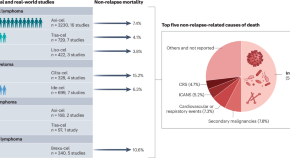
Tracking non-relapse mortality after CAR T cell therapy
Infections account for the highest number of non-relapse-related deaths after CAR T cell therapy, underscoring the necessity for clinical risk-mitigating strategies and a deeper understanding of CAR T cell-related cytopenia.
- Viktoria Blumenberg
- Marcela V. Maus

People who lack the immune protein TNF can still fight infection
The immune-signalling protein TNF has an essential role in inflammatory responses. Two people who were found to have no functional TNF are surprisingly healthy and able to fend off most infections, but are susceptible to tuberculosis.
- Charlie J. Pyle
- David M. Tobin

Hypocretin receptor antagonists prevent opioid addiction
The opioid abuse epidemic is a major health concern that requires new pain management strategies. Findings now show that suvorexant, a dual hypocretin receptor antagonist, reverses the anatomical and circuit alterations induced by opioids and decreases addictive behavior while maintaining the analgesic properties of the drugs.
- Jimmy J. Fraigne
- John H. Peever
Related Subjects
- Drug development
- Epidemiology
- Experimental models of disease
- Genetics research
- Outcomes research
- Paediatric research
- Preclinical research
- Stem-cell research
- Clinical trial design
- Translational research
Latest Research and Reviews
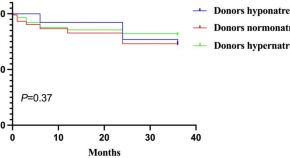
Effects of donors’ and recipients’ preoperative serum sodium on the prognosis of liver transplantation
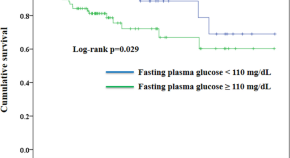
Relationship between preoperative glucose level and all-cause mortality in patients with osteoporotic vertebral compression fracture who underwent percutaneous vertebroplasty
- Yu-Hsien Lin
- Yu-Tsung Lin
- Jun-Sing Wang
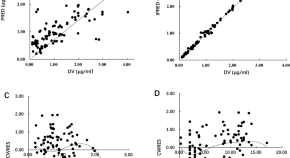
Individualized regimen of Posaconazole oral suspension in Chinese HSCT patients based on population pharmacokinetic model
- Yi-Shuo Shu
- Zhong-Hua Dong
- Hai-Yan Shi
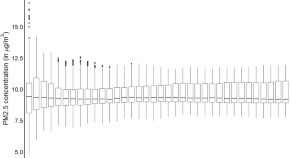
Differing associations of PM 2.5 exposure with systolic and diastolic blood pressures across exposure durations in a predominantly non-Hispanic Black cohort
- Rena R. Jones
- Briseis Aschebrook-Kilfoy

Comparison of clustering and phenotyping approaches for subclassification of type 2 diabetes and its association with remission in Indian population
- Pramod Tripathi
- Anagha Vyawahare
- Maheshkumar Kuppusamy
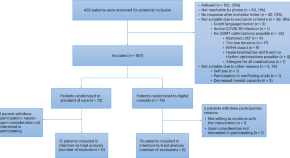
Digital consults in heart failure care: a randomized controlled trial
In a multicenter, open-label, randomized controlled trial, digital consults including digital data sharing, patient e-learning and guideline recommendations to clinicians improved guideline-directed medical therapy over the course of 12 weeks.
- Jelle P. Man
- Maarten A. C. Koole
- Mark J. Schuuring
News and Comment

Opioid receptors: single molecule studies shed light on mechanisms of efficacy
- Cornelius Krasel
- Moritz Bünemann

Simplifying obstetric sonography with AI
Researchers developed an AI-enabled, battery-operated tool that can be operated by clinicians with no sonography experience — and that measures gestational age as accurately as high-specification ultrasound.
- Karen O’Leary
Urgently clarify how AI can be used in medicine under new EU law
- Thomas J. Hwang
- Prokar Dasgupta

Decentralized trial reveals home-testing behaviors for respiratory infections
In a digital-only study, people were more likely to take a home test if prompted to do so on the basis of self-reported symptoms rather than by wearable sensor data, with implications for public health responses and pandemic planning.
Quick links
- Explore articles by subject
- Guide to authors
- Editorial policies
- All health topics »
- Coronavirus disease (COVID-19)
- Reproductive health
- Air pollution
- Mental health
- Publications

- Initiatives
- Health security and AMR
- NCDs and ageing
- Climate change
- Reaching the unreached

- News releases
- Feature stories
- Photo stories
- Commentaries
- Photo library
- Press contact
- People of the Western Pacific

- Dzud in Mongolia
- Mpox outbreak
- Seasonal influenza
- Avian influenza
- Pacific islands
- Emergency medical teams
- The Global Outbreak Alert and Response Network (GOARN)
- Preparedness
- Health Data Platform >>
- How we work
- Where we work
- Our programmes
- Country support
- Pacific technical support
- Regional Director
- Regional Committee
- Collaborating Centers
- Regional health initiatives

- Health topics /
- Health research
Health research in the Western Pacific
Health research entails systematic collection or analysis of data with the intent to develop generalizable knowledge to understand health challenges and mount an improved response to them. The full spectrum of health research spans five generic areas of activity: measuring the health problem; understanding its cause(s); elaborating solutions; translating the solutions or evidence into policy, practice and products; and evaluating the effectiveness of solutions.
The need for credible evidence on what works is urgent, as many countries in the Western Pacific Region are still struggling to provide minimal health services to their populations with significant preventable morbidity and mortality. However, the ultimate benefit of health research lies in its translation into strategies, technologies and interventions that are effectively and appropriately delivered to benefit the people, in particular the poor and other vulnerable groups.
Technical links
- Prequalification of medicines by WHO
- Monitoring health for SDGs
- Universal health coverage (UHC)
- Development of health research (WPR/RC50.R7 )
Strengthening health research and evidence-based decision making
Strengthening health information systems for decision-making in countries
Guiding optimal development and use of digital health towards improved health outcomes
Guiding research on infectious diseases of poverty
Asia-Pacific countries pledge to eliminate parent-to-child transmission of HIV and syphilis
Viet Nam signs aide-memoire to combat antimicrobial resistance
WHO urges action against antimicrobial resistance in the Western Pacific Region
Featured publications
National health research systems in Pacific Island countries National health research systems in Pacific Island countries
Regional framework for health research regional framework for health research.
Related links
Country research portals
Related Health Topics
Health data and health information systems
Health governance
Universal health coverage
Certificate in Health Economics & Outcomes Research

The online 9-month, part-time health economics and outcomes research (HEOR) Certificate is tailored for individuals seeking an introduction to HEOR, including professionals in the pharmaceutical and biotechnology industry, clinicians and other health care professionals, graduate degree holders, and graduate degree students.
HEOR has become increasingly important. Providing affordable health care while maintaining the best possible health outcomes is a challenge to all governments and health care payers. This is especially true in the United States, which spends almost twice as much per capita compared to other high-income countries yet has substantially poorer health outcomes. Major drivers of the spending gap include higher administrative costs and the higher prices of devices and pharmaceuticals in the US.
As health care becomes more complex, health care decisions can be improved by combining information from economic analyses (health economics) and vital clinical data on patients (outcomes research) to evaluate health care value . HEOR informs health care decision-making by allowing stakeholders, especially payers, health care providers, and patients, to understand the clinical, economic, and quality of life endpoints of various treatments and health care practices. Individuals seeking an introduction to HEOR, including professionals in the pharmaceutical and biotechnology industry, clinicians and other health care professionals, graduate degree holders, and graduate degree students, are encouraged to apply.
Benefits of the HEOR Certificate Program
- The flexible online format is perfect for local or global participation
- Students experience live webinars, active discussion boards and asynchronous lectures
- Program faculty are experts in clinical investigation, clinical epidemiology, health services research, outcomes research, meta-analysis, biostatistics, drug development, and related fields.
- No thesis is required
- Faculty post all required reading materials on the course website, so there are no books or materials that participants need to purchase.
- U.S. Department of Health & Human Services

- Virtual Tour
- Staff Directory
- En Español
You are here
Nih research matters.
December 22, 2020
2020 Research Highlights — Promising Medical Findings
Results with potential for enhancing human health.
With NIH support, scientists across the United States and around the world conduct wide-ranging research to discover ways to enhance health, lengthen life, and reduce illness and disability. Groundbreaking NIH-funded research often receives top scientific honors. In 2020, these honors included one of NIH’s own scientists and another NIH-supported scientist who received Nobel Prizes . Here’s just a small sample of the NIH-supported research accomplishments in 2020.
Full 2020 NIH Research Highlights List
20200929-covid.jpg
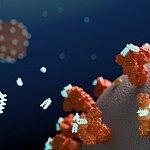
New approaches to COVID-19
As the global pandemic unfolded, researchers worked at unprecedented speed to develop new treatments and vaccines. Scientists studied antibodies from the blood of people who recovered from COVID-19 and identified potent, diverse ones that neutralize SARS-CoV-2 . Some antibody treatments have now been given emergency use authorization by the FDA, with many others in development . However, such antibodies—called monoclonal antibodies—are difficult to produce and must be given intravenously. NIH-researchers have been pursuing other approaches, including using antibodies from llamas , which are only about a quarter of the size of a typical human antibody and could be delivered directly to the lungs using an inhaler. Computer-designed “miniproteins” and other antiviral compounds are also under investigation.
20200622-mosquito.jpg
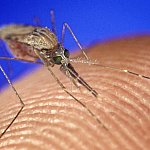
Universal mosquito vaccine tested
Most mosquito bites are harmless. But some mosquitoes carry pathogens, like bacteria and viruses, that can be deadly. A small trial showed that a vaccine against mosquito saliva—designed to provide broad protection against mosquito-borne diseases—is safe and causes a strong immune response in healthy volunteers. More studies are needed to test its effectiveness against specific diseases.
20201006-knee-stock.jpg

Machine learning detects early signs of osteoarthritis
Osteoarthritis is the most common type of arthritis. It results when cartilage, the tissue that cushions the ends of the bones, breaks down. People with osteoarthritis can have joint pain, stiffness, and swelling. Some develop serious pain and disability from the disease. Using artificial intelligence and MRI scans, scientists identified signs of osteoarthritis three years before diagnosis. The results suggest a way to identify people who may benefit from early interventions.
20201103-eye.jpg

Advances in restoring vision
Several common eye diseases, such as age-related macular degeneration and retinitis pigmentosa, damage the retina, the light-sensitive tissue in the eye. They can eventually lead to vision loss. Two studies looked at ways to restore vision in mouse models. Researchers reprogrammed skin cells into light-sensing eye cells that restored sight in mice. The technique may lead to new approaches for modeling and treating eye diseases. Other scientists restored vision in blind mice by using gene therapy to add a novel light-sensing protein to cells in the retina. The therapy will soon be tested in people.
20200107-aging.jpg

Blood protein signatures change across lifespan
The bloodstream touches all the tissues of the body. Because of the constant flow of proteins through the body, some blood tests measure specific proteins to help diagnose diseases. Researchers determined that the levels of nearly 400 proteins in the blood can be used to determine people’s age and relative health. More research is needed to understand if these protein signatures could help identify people at greater risk of age-related diseases.
20201027-hiv-thumb.jpg
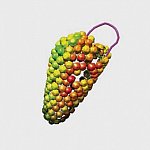
Understanding HIV’s molecular mechanisms
More than a million people nationwide are living with HIV, the virus that causes AIDS. HIV attacks the immune system by destroying immune cells vital for fighting infection. Researchers uncovered key steps in HIV replication by reconstituting and watching events unfold outside the cell. The system may be useful for future studies of these early stages in the HIV life cycle. In other work, experimental treatments in animal models of HIV led to the viruses emerging from their hiding places inside certain cells—a first step needed to make HIV vulnerable to the immune system.
20200225-parkinsons.jpg
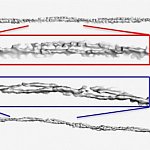
Test distinguishes Parkinson’s disease from related condition
A protein called alpha-synuclein plays a major role in Parkinson’s disease as well as other brain disorders. Early symptoms of Parkinson’s disease and another disease involving alpha-synuclein, multiple system atrophy, can be similar. Researchers created a test using cerebrospinal fluid that can distinguish between these two diseases with 95% accuracy. The results have implications for the early diagnosis and treatment of these conditions and may help in the development of new targeted therapies.
20200114-cream.jpg

Understanding allergic reactions to skin care products
Personal care products like makeup, skin cream, and fragrances commonly cause rashes called allergic contact dermatitis. It’s not well understood how chemical compounds in personal care products trigger such allergic reactions. Scientists gained new insight into how personal care products may cause immune responses that lead to allergic responses in some people. Understanding how compounds in these products trigger immune reactions could lead to new ways to prevent or treat allergic contact dermatitis.
Connect with Us
- More Social Media from NIH
Watch CBS News
Hormone therapy for women in menopause can slow aging and benefit health, study shows
By Sara Moniuszko
Edited By Allison Elyse Gualtieri
August 30, 2024 / 10:48 AM EDT / CBS News
Hormone therapy can benefit women's health during menopause , according to new research.
In the study, published Thursday in JAMA Network Open , researchers looked at more than 100,000 women in the U.K. and found being on hormone replacement therapy seems to slow biological aging.
"In this study, postmenopausal women with historical (hormone therapy) use were biologically younger than those not receiving (hormone therapy), with a more evident association observed in those with low (socioeconomic status)," the authors wrote. "Promoting (hormone therapy) in postmenopausal women could be important for healthy aging."
Dr. Céline Gounder, CBS News medical contributor and editor-at-large for public health at KFF Health News, said Friday on "CBS Mornings" the study is "really significant."
"It wasn't just about how you look, it was about your risk of death, in particular from cardiovascular disease," she said, adding the study looked at both chronological age (the age based on your date of birth) as well as biological age, which is "not just about how you look, but it's really about your health."
Gounder said the association might have been stronger with those of a lower socioeconomic status because aging is "also a reflection of your day-to-day stress ."
"When we talk about somebody having lived a hard life, it's not just a question of smoking or heavy drinking or using drugs. It's also the day-to-day stress of financial stress, worried about keeping a roof over your head, food on the table, your children's futures — and that stress also ages you," she said. "So of course, women of lower socioeconomic status are experiencing that more. Education is also a important factor here, being able to better access healthcare."
The study comes after longtime public misunderstanding around horomone therapy, stemming partly, Gounder said, from studies done about 20 years ago that have since been show to be problematic in terms of how they were designed.
"Unfortunately, a lot of women were discouraged from taking hormone replacement therapy as a result of those studies," she said.
Still, for some women, hormone therapy isn't an option, so it's important to talk to your doctor.
"There are some women who cannot take hormone replacement therapy. For example, if you have a history of breast cancer or blood clots," said Gounder. "And so this really depends on who we're talking about, the timing of when to start and how long to be on them."
- Women's Health
Sara Moniuszko is a health and lifestyle reporter at CBSNews.com. Previously, she wrote for USA Today, where she was selected to help launch the newspaper's wellness vertical. She now covers breaking and trending news for CBS News' HealthWatch.
More from CBS News

Catching up on sleep on weekends may lower risk of heart disease, study finds

2 die from West Nile virus in New Jersey, bringing reported deaths in U.S. to 5

Health workers warn of challenges to looming Gaza polio vaccine rollout

Dallas police officer Darron Burks "executed" in targeted attack, chief says
September National Health Observances: Healthy Aging, Sickle Cell Disease, and More
Each month, we feature select National Health Observances (NHOs) that align with our priorities for improving health across the nation. In September, we’re raising awareness about healthy aging, sickle cell disease, substance use recovery, and HIV/AIDS.
Below, you’ll find resources to help you spread the word about these NHOs with your audiences.
- Healthy Aging Month Each September, we celebrate Healthy Aging Month to promote ways people can stay healthy as they age. Explore our healthy aging resources , bookmark the Healthy People 2030 and Older Adults page , share our Move Your Way® materials for older adults , and check out the Physical Activity Guidelines for Americans Midcourse Report . You can also share resources related to healthy aging from the National Institute on Aging — and register for the 2024 National Healthy Aging Symposium to hear from experts on innovations to improve the health and well-being of older adults.
- National Recovery Month The Substance Abuse and Mental Health Services Administration (SAMHSA) sponsors National Recovery Month to raise awareness about mental health and addiction recovery. Share our MyHealthfinder resources on substance use and misuse — and be sure to check out Healthy People 2030’s evidence-based resources related to drug and alcohol use .
- National Sickle Cell Awareness Month National Sickle Cell Awareness Month is a time to raise awareness and support people living with sickle cell disease. Help your community learn about sickle cell disease by sharing these resources from the National Heart, Lung, and Blood Institute (NHLBI) . You can also encourage new and expecting parents to learn about screening their newborn baby for sickle cell . And be sure to view our Healthy People 2030 objectives on improving health for people who have blood disorders .
- National HIV/AIDS and Aging Awareness Day (September 18) On September 18, we celebrate HIV/AIDS and Aging Awareness Day to encourage older adults to get tested for HIV. Share CDC’s Let’s Stop HIV Together campaign to help promote HIV testing, prevention, and treatment. MyHealthfinder also has information for consumers about getting tested for HIV and actionable questions for the doctor about HIV testing . Finally, share these evidence-based resources on sexually transmitted infections from Healthy People 2030.
- National Gay Men’s HIV/AIDS Awareness Day (September 27) National Gay Men’s HIV/AIDS Awareness Day on September 27 highlights the impact of HIV on gay and bisexual men and promotes strategies to encourage testing. Get involved by sharing CDC’s social media toolkit and HIV information to encourage men to get tested — and share our MyHealthfinder resources to help people get tested for HIV and talk with their doctor about testing .
We hope you’ll join us in promoting these important NHOs with your networks to help improve health across the nation!
The Office of Disease Prevention and Health Promotion (ODPHP) cannot attest to the accuracy of a non-federal website.
Linking to a non-federal website does not constitute an endorsement by ODPHP or any of its employees of the sponsors or the information and products presented on the website.
You will be subject to the destination website's privacy policy when you follow the link.

- Mideast News
- Art&Culture
- ynetespanol
- Privacy Policy
- Terms of Use
Research: Israeli snack reduces chance of developing peanut allergy among children
The quintessential israeli snack bamba and its part in reducing peanut allergies remains a source of national pride; 2008 study found peanut allergies are far less common among israeli kids than their british peers.


Key takeaways:
- An allergic reaction does not automatically lead to an allergy: Some children had positive skin tests for peanuts at the study's start but could still consume peanuts. This indicates low specificity of these tests, and a positive skin test without a reaction history doesn’t necessarily mean an allergy to that food.
- Allergies can develop later in life: The largest difference in peanut allergy rates was between children with positive skin tests who avoided peanuts (34%) versus those who consumed them (0%). This highlights that, while waiting for a challenge test (about a year), there’s a high chance a child with a positive skin test may develop an allergy to that food, even if initially non-allergic.
- Testing children only for suspected allergenic foods is recommended: It’s not advisable to conduct skin tests for foods regularly consumed or not yet eaten. Similarly, blood tests for food-specific IgE antibodies should only be conducted for foods suspected of causing an allergic reaction, upon referral by an allergy and immunology specialist.

IMAGES
VIDEO
COMMENTS
Learn about WHO's response to public health challenges through research, including fact sheets, databases, tools, publications and videos. Explore the five generic areas of health research activity: measuring, understanding, developing, implementing and evaluating solutions.
The findings suggest that people can learn to reduce the brain activity causing some types of chronic pain that occur in the absence of injury or persist after healing. 2021 Research Highlights — Basic Research Insights >>. NIH findings with potential for enhancing human health include new drugs and vaccines in development for COVID-19 ...
WHO promotes forward-looking and prioritized global health research to improve health for all. Learn about WHO's role in foresight, ethics, policy, access, and evidence-informed health policy-making.
Official website of the National Institutes of Health (NIH). NIH is one of the world's foremost medical research centers. An agency of the U.S. Department of Health and Human Services, the NIH is the Federal focal point for health and medical research. The NIH website offers health information for the public, scientists, researchers, medical professionals, patients, educators,
With NIH support, scientists across the United States and around the world conduct wide-ranging research to discover ways to enhance health, lengthen life, and reduce illness and disability. Groundbreaking NIH-funded research often receives top scientific honors. In 2021, these honors included Nobel Prizes to five NIH-supported scientists.
Implementation of Healthy People 2030 will by strengthened by engaging users from many sectors and ensuring the effective use and alignment of resources. Promoting the nation's health and well-being is a shared responsibility—at the national, state, territorial, tribal, and community levels. It requires involving the public, private, and not ...
The health sciences study all aspects of health, disease and healthcare. This field of study aims to develop knowledge, interventions and technology for use in healthcare to improve the treatment ...
Overview. This comprehensive guide to health research reaches out to a wide spectrum of people: students who wish to learn the basic principles of health research and how to conduct it, field researchers, and those involved in teaching and training of health research methodologies. It seeks to develop practical skills, starting with defining ...
The Importance of Health Research. Like privacy, health research has high value to society. It can provide important information about disease trends and risk factors, outcomes of treatment or public health interventions, functional abilities, patterns of care, and health care costs and use.
The term "health research," sometimes also called "medical research" or "clinical research," refers to research that is done to learn more about human health. Health research also aims to find better ways to prevent and treat disease. Health research is an important way to help improve the care and treatment of people worldwide.
International Journal of Environmental Research and Public Health. 2021;18(6):2882. Katz DL, Karlsen MC, Chung M, et al. Hierarchies of evidence applied to lifestyle medicine (HEALM): introduction of a strength-of-evidence approach based on a methodological systematic review. BMC Medical Research Methodology. 2019;19(1):178.
Introduction. Public health is critical to a healthy, fair, and sustainable society. Public health's role in this vision stems from its foundational values of social justice and collectivity (Rutty and Sullivan 2010) and—we argue—from its position at the interface of research, practice, and policy.. Realizing this vision requires imagining a public health community that can maintain that ...
JMS, M.Ed. is currently a Ph.D. student conducting dissertation research on population health and behavior change under JOP's supervision at the University of Rhode Island.
Here, the authors investigate the fluctuations of physiological indices along aging trajectories and observed a characteristic decrease in the organism state recovery rate. Timothy V. Pyrkov ...
Aug. 28, 2024 — New research explores music's impact on learning, memory, and emotions in two studies. One reveals that familiar music can enhance concentration and learning, while the other ...
Your Healthiest Self: Wellness Toolkits — Your relationships, your emotions, your surroundings, and other aspects of your life impact your overall health. Find ways to improve your well-being with NIH's wellness toolkits. Find science-based health information on symptoms, diagnosis, treatments, research, clinical trials and more from NIH, the ...
Harvard Medical School has created a large department dedicated to developing and teaching young scientists about the emerging field of computational medicine. This field uses new mathematical techniques to make sense of the thousands of numbers generated in experiments measuring various molecules. Analyzing such "big data" was once unimaginable.
F inding and choosing a strong research topic is the critical first step when it comes to crafting a high-quality dissertation, thesis or research project. If you've landed on this post, chances are you're looking for a healthcare-related research topic, but aren't sure where to start. Here, we'll explore a variety of healthcare-related research ideas and topic thought-starters across ...
Strength training, important for balance, bone health, controlling blood sugar, and mobility, is recommended 2-3 times per week. Finding ways to reduce stress is another strategy that can help you stay healthy, given the connection between stress and a variety of disorders. There are many ways to bust stress. Try, meditation, mindfulness, yoga ...
The funding investments are aligned with the goals of the White House Initiative on Women's Health Research, which has committed to prioritizing investments in women's health research, integrating women's health across the federal research portfolio, and galvanizing new research on midlife health of women. These funding announcements ...
Medical research involves research in a wide range of fields, such as biology, chemistry, pharmacology and toxicology with the goal of developing new medicines or medical procedures or improving ...
New research suggests doing so may even benefit your heart health, amounting to a 19% lower risk of developing heart disease, according to a research abstract published Thursday. The abstract hasn ...
Health research entails systematic collection or analysis of data with the intent to develop generalizable knowledge to understand health challenges and mount an improved response to them. The full spectrum of health research spans five generic areas of activity: measuring the health problem; understanding its cause(s); elaborating solutions; translating the solutions or evidence into policy ...
Overview. The online 9-month, part-time health economics and outcomes research (HEOR) Certificate is tailored for individuals seeking an introduction to HEOR, including professionals in the pharmaceutical and biotechnology industry, clinicians and other health care professionals, graduate degree holders, and graduate degree students.
NIH Research Matters. Bldg. 31, Rm. 5B52, MSC 2094. Bethesda, MD 20892-2094. Editor: Assistant Editors: NIH Research Matters Office of Communications and Public Liaison NIH Office of the Director. NIH findings with potential for enhancing human health include new approaches to COVID-19, a universal mosquito vaccine, and advances in restoring ...
The Health Behaviour in School-aged Children (HBSC) study provides unique insights into the health and well-being of adolescents across Europe, central Asia and Canada. In this, the study's 40th anniversary year, we are delighted to be launching the findings from the 11th consecutive international survey in a series of topic-based volumes.
Hormone therapy can benefit women's health during menopause, according to new research. In the study, published Thursday in JAMA Network Open, researchers looked at more than 100,000 women in the ...
Each month, we feature select National Health Observances (NHOs) that align with our priorities for improving health across the nation. In September, we're raising awareness about healthy aging, sickle cell disease, substance use recovery, and HIV/AIDS. Below, you'll find resources to help you spread the word about these NHOs with your audiences.
The beloved Israeli snack, Bamba, might soon lose its Israeli roots and relocate to Switzerland. However, its health contributions, particularly in reducing the risk of peanut allergies, remain a ...
The Far-Reaching Ripple Effects of a Discredited Cancer Study A flawed study attracted grants, investments and other researchers who based new work on the faulty findings